Text
Interview #500: Alex Thebez
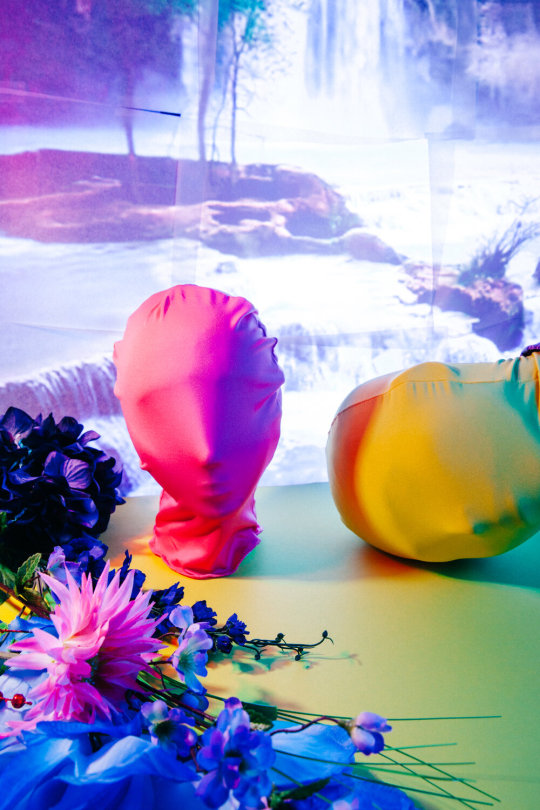
Alex Thebez is an Indonesian artist, who is currently living in New York. He is fascinated by technology and its capacity to create and distribute visual imagery at a massive scale, and creates work that explores ideas of discomfort and disconnect. In his work, Alex is primarily concerned with images (both moving and still) and their ability to translate difficult emotions and contradictions surrounding themes of sexuality, national identity, home, and collective memory. Alex also runs TAGTAGTAG, an independent journal of creativity and influence.
I first met Alex online when I did an interview with him 10 years ago, and subsequently hung in real life whenever he visited. Such connections are the reason I’ve enjoyed running this platform: when online friends become IRL friends! To mark Nope Fun's 500th interview, it felt appropriate to speak to him again. We spoke about his latest projects, online spaces and identities.

Thanks for agreeing to do this! I first interviewed you in 2012! I wanted to begin by asking: how has your approach and relationship to photography changed or not changed? You’ve done quite a few personal projects and commissions since then.
Hi Chang Ming, appreciate you reaching out. Definitely thankful that you are in my orbit because of photography and the internet. The biggest thing for me personally is the fact that I do not necessarily see photography as a craft that would be my primary method of income. I had the wonderful opportunity to create a lot of work that aligns with my personal interest and style, but ultimately I’ve realized that parts of my creative practice may not necessarily be tied strictly to image making. The internet and networked experiences are at the core of my work. I am pursuing this now in my current career, but also had the chance to explore my ideas a bit here through one of my projects - “A Handful of Unfulfilled Wishes.” I’ve become more interested not just in the photograph itself but also systems that enable it and also how everyday people use photography in their day to day experience today.
In “A Handful of Unfulfilled Wishes” there seems to be recurring ideas of anonymity, fractured objects and technology - all in a colourful mess. What was the process of making this project like? There’s quite a mix of elaborate studio set-ups (from what I can tell) and some portraits.
To be honest it was pretty organic. A lot of my work is about disassociation or the fragmentation of memory. In this series specifically, I was thinking about masculine identities, technology and emotional states within online spaces. Usually I have ideas for individual pictures, without necessarily knowing how it all fits together. When working on this series, I would create images without intentionally thinking that they would all fit into the same series. It’s not until much later, when I revisit the images again - together - that they feel as if they fit together. I knew that I wanted to create images that hint at how we interact with technology day to day, and how it evokes a sense of feeling which resulted in the more abstract images. The portraits and figurative photographs, however, refer to archetypes of people or personalities that may be associated with online culture. The work took a while, probably the longest project I personally have ever worked on.
I like how you had a subjective approach to ideas of technology and online space, which may be typically associated with something more impersonal. I also sometimes take pictures based on a certain notion or feeling, then retrospectively make sense of it. Photography can be a way to articulate things we can’t easily put into words. Would you say you had a similar approach for your earlier series “Feelings & Similar Items”?
For sure! Photography for me has always been a method to give form or shape to something that is not tangible. Whether it is a memory, a feeling or an idea -- photography helps ground something that is abstract into a visible form based on figures that exist in the world. Feelings & Similar Items was a series that explored a sense of placelessness. In Feelings, I mostly used personal documentary and street photography instead of studio photography.

You also include gifs in your personal and commissioned works which have quite a distinct look. You also did Gif Friends. Going beyond the static image, what about gif/videos are you drawn to? Thinking about how images circulate, do you see it as part of image-making or a form of digital medium on it’s own?
I think the idea of the internet and networked experiences are core to my creative practice. One idea that I was always fascinated with is the fact that digital technology flattens the boundary between different kinds of visual media. Whether it is a GIF, a video or a JPEG, they are all ultimately files - pixels on a screen. I would say that for the most part, my images are made for the internet. As an artist, I appreciate how combining these different elements together emphasize the sense of aesthetic that is only possible with digital technology (both in the way visual imagery is distributed and created.) Digital distribution is how most people create and consume images these days, so really, this is part of the language image-making at large now.
On the topic of images made for the internet and digital distribution, you mentioned you are creating an NFT. I’m curious but admittedly I don’t know much about it. What made you want to do it? What do you think about NFTs and what it means for artists?
As mentioned, the internet and networked experiences have been at the core of my curiosity, which means naturally I have been spending time learning more about NFTs and crypto. What makes me want to create an NFT has to do mostly with experimentation. Specifically for my series “A Handful of Unfulfilled Wishes” - the work fits into the way we distribute media online. It may be a bit early to say, but NFTs may enable artists to create new ways to engage with their community while being able to own the monetization of how their work is distributed, which I think is pretty exciting.

You have another project called “Undress”. What’s the idea/process of making this ongoing series?
“Undress” is similar to “Wishes” in that they are both projects that explore identities. I started thinking about clothing and the way that it shapes up who we are. Specifically, masculine identities. I had been thinking about lust, especially homoerotic lust and how it can relate to gestures that may seem everyday. “Undress” is an attempt to look at the moment in between, gestures that may translate to both identity and seduction. For the project, I intentionally placed my models against a white fabric background, shooting them using harsh, slightly overexposed strobe lighting. Most of the bodies featured in the project are either White or Asian as well, as a nod to the liminal space between the two ethnicities especially in the context of homosexual desires.
I like that you bring up this idea of an in-betweenness, perhaps a state of transition between how we present ourselves publicly vs privately, but frozen by the camera. Also, that it is undressing and not dressing, suggesting a removal. Any upcoming ideas or projects?
That’s a very interesting point, that undressing suggests a removal! Especially when thinking about racial dynamics and also how clothing adds (or detracts) from your identity. As for upcoming ideas, I would like to finalize Undressing - ideally I’d photograph a few more people to finalize this series. I am also thinking about projects that can uniquely live as NFTs, in addition to editing a few photographs that I have from my archive more cohesively. TAGTAGTAG has been dormant for a while and I am hoping to start that off again sometime early next year with a different format or approach.
Lastly, any music to recommend?
I have been listening to Ryo Fukui a lot. A friend of mine, Rob Karpay also has this wonderful album that I have been coming back to this year. I tend to make playlists once in a while, and you can find them all on my blog.

His website and Instagram. You can also find his NFTs here.
Get more updates on our Facebook page and Instagram.
34 notes
·
View notes
Text
Interview #499: Li Hui
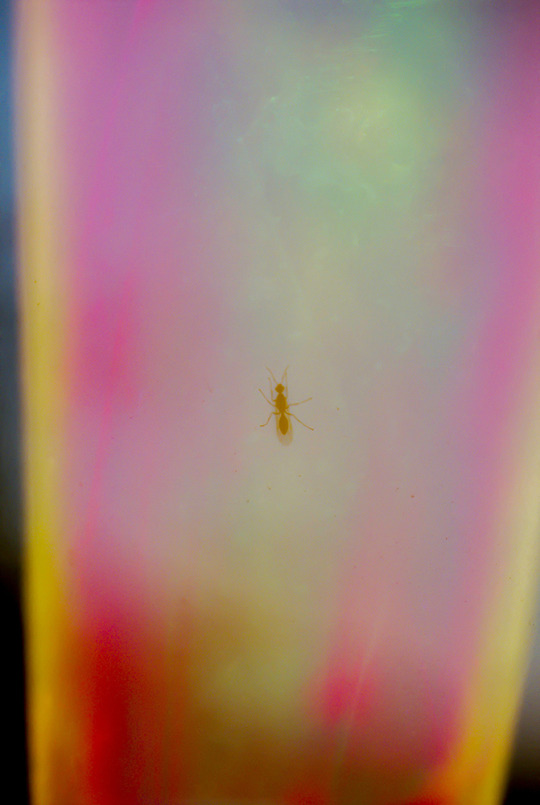
If you have been following art and photography online platforms, chances are you have come across Li Hui’s work before. I first stumbled upon her work on Flickr about a decade ago (yes, before Instagram and Tumblr, Flickr was the go-to place to share photography) and was immediately drawn to her sensibilities and the ability of her photographs to feel personal yet ambiguous.
Everyday situations become otherworldly and dream-like through her lens. There’s softness to the self-taught photographer’s images and a magic that can’t quite be put into words. We spoke to find out a bit more about her process and inspiration.
q: I've been a fan of your work since Flickr days, perhaps almost 10 years ago since I started Nope Fun, so I'm glad I finally got to interview you! How do you think your photography and approach has changed or stayed the same over the years?
a: I miss the Flickr days. Thank you for following my work all this time! I actually don’t like Instagram, I’m showing my work there less and less, and I’m being careful because of their strict rules. I feel that photos are trapped in this little square. It’s not built for photography obviously. Fashionable and glamorous shots attract people to stay. But what I most love about photography is being honest. I’m just not able to show the whole me on Instagram.
I think I’ve been slightly changing my themes every year, but what I work on generally revolves around the same basic ideas. I do feel like I’ve been able to go deeper over the years.
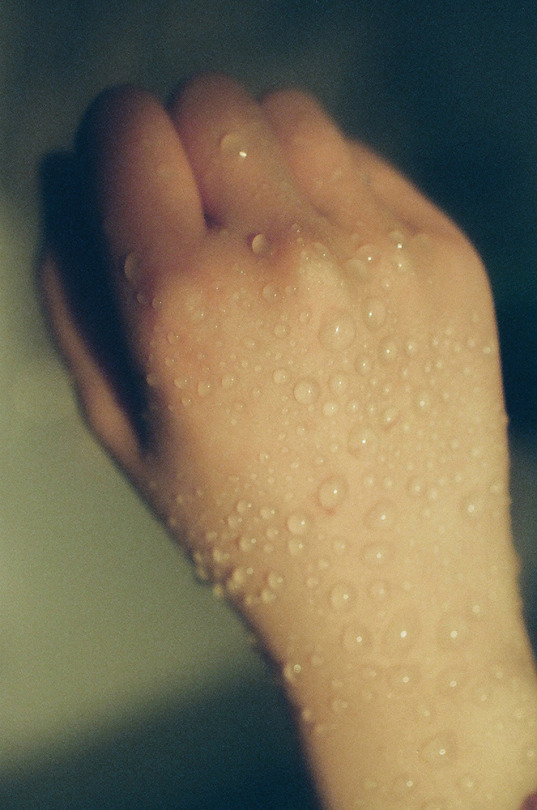
q: There's a certain intimacy and sensuality in your pictures. From soft light on skin to textures in nature, portrayed in an ethereal way. What does intimacy mean to you?
a: Life acts as a mirror, in the sense that there is something directly reflected back to me. I’m interested in sharing what I see and what I personally feel about my surroundings. Intimacy is a personal journey to highlighting this internal discovery.
q: How has the pandemic period been for you? Did you still continue photographing and making works?
a: I was worried like everybody else at the beginning, but things got better after several months. So I started taking photos again before I lose touch and forget everything that I’ve learned. Luckily, I mostly work from home or somewhere in nature.
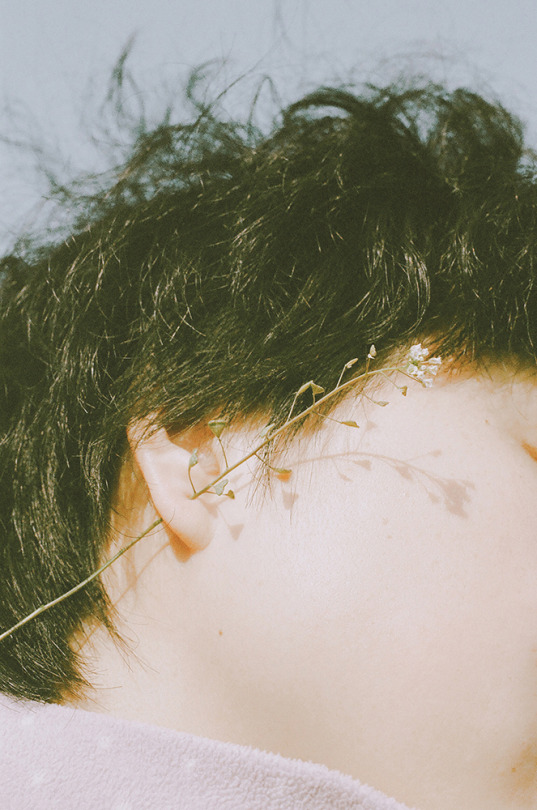
q: Some of your photos are more conceptual and staged. Could you tell us more about your process on how you conceptualise and carry out the ideas?
a: These are actually not really planned in advance. I usually pick up the camera only because I’m in the right mood, not because I purposefully set up a particular scene. So basically, I shoot whatever I see. I found this mysterious connection and coincidence in the process of sorting through my works when I started publishing photo books. And then I kept this habit. It feels like playing a game to me, it’s a way to find the hidden common parts connecting everything in the universe.

q: You have published photobooks and exhibited your works. Could you share what you like about publishing or exhibiting your works? Any special memories?
a: What I like most about the photo books and exhibitions is you can freely change the layouts, the size, the texture, and the ways you want to share your work with the audience without any disturbance, which is completely different from any online platforms.
I remember at one of my solo shows, I experimented with light in the entire space, and the venue was filled with colours when the sun shone through the windows.
q: You mentioned in other interviews that you are inspired by films, and your photos have a cinematic quality to them. Any favorite movies?
a: I would say there are two movies that represent the two sides of me. Under the Skin by Jonathan Glazer and Ratcatcher by Lynne Ramsay.
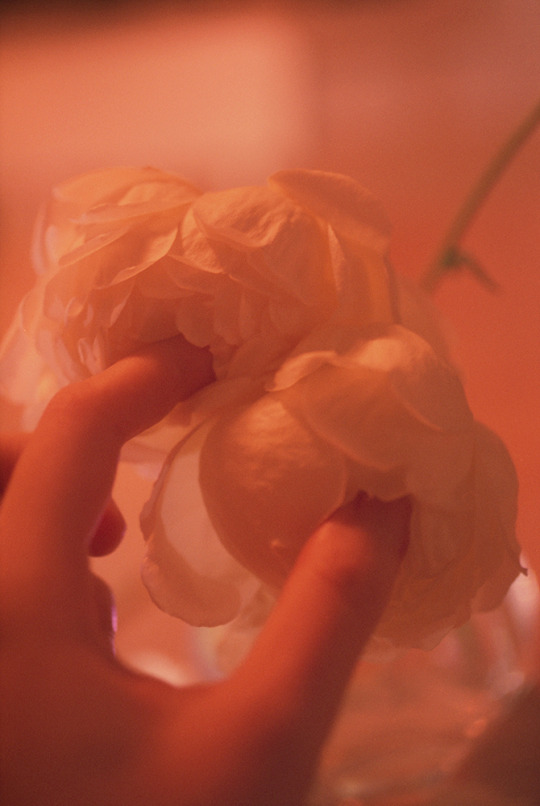
q: What's your favourite fruit?
a: Watermelon! I like the smell of it.
q: Upcoming projects or ideas?
a: I’m thinking about compiling a book focused only on the mysterious and to collect all the things that I find fascinating. The works will be only shown in this book as a sort of interconnected story. I will not post those on Instagram as I spent too much time making everything over there feel “right”. It might tap into something otherworldly, the external and internal co-existing in a mysterious ether. This place encompasses the air that circulates, the light, the rhythms, everything around without distorting anything, but still with a slightly different angle than what we think of as our common reality.

q: Any music to recommend?
a: I could recommend so much, but I often listen to Julianna Barwick when I take pictures.

her website, and Instagram.
Get more updates on our Facebook page and Instagram.
748 notes
·
View notes
Text
Interview #498: Building a House

This is an excerpt of a conversation between Dennese Victoria and me. I featured Dennese on Nope Fun last year, and in August this year she invited me to have another conversation. We spoke about the past 11 years of Nope Fun, our practices, and friendship.
Sometimes I get asked how I maintained Nope Fun over the years as a personal project, and through this conversation I realised it’s really about curiosity and the impulse to connect to like-minded people. That’s what’s been meaningful to me.
Dennese Victoria
Lee Chang Ming
I discovered something today. You started Nope Fun in August.
I can't remember actually
I looked at the archives and the first post is August 26 or something.
In 2010
So it's been 11 years of you doing this.
I should have an anniversary party
I like the coincidence that it's your anniversary month. And then I checked the questions too because I was wondering, I wonder how he has changed, in terms of how you ask questions.
Oh, yeah it was totally different
You were asking how long they brushed their teeth
Yeah, it was always very trivial, kind of frivolous questions. Like, what's your favourite food. Or what's your favourite place in the house. Stuff that's totally not related to photographs. The one thing that I kept constant is asking about music. What's your favourite music? What do you recommend?
So, take me back. Where were you then?
2010 I had just finished army.
Army?
Because here in Singapore, we have to do compulsory conscription for military.
How did you look like?
Yeah, I did two years of military. I know I don't look like it, but I was in the infantry. So I was in a jungle with guns and everything in the front lines like, camping or whatever. But I was just training, there's no war here. It was two years of pain and suffering.
Yeah so I just finished two years of army and then I was really following a lot of online blogs, like art blogs, not just photography, but just art blogs in general. And then seeing a lot of artists that inspired me and all that. So then I was like, okay, actually, why don't I just start it myself?
Actually Nope Fun first started on Flickr. So I would message - my first few interviews I actually conducted on Flickr then I posted them on Tumblr. And it's like, yeah, nothing to lose, right? So I was just reaching out to all these photographers that I liked at the time or whatever. I mean, if not, how am I ever going to talk to these people? But then again, I just started Nope Fun without thinking very much at all. It just really started on a whim, like one random night and Nope Fun itself is just a song at that time on My Space.
So you were following a lot of people online, but were you shooting also?
A little bit, yeah.
I can't remember if you studied art or something.
No, no. I was studying Communications and New Media. But it's not creative in that sense. There weren't any creative projects like photography or drawing, I was not aware of it like that. But it was more like academic theories. So photography is just mainly self-taught. But I also like to think that through looking at a lot, or getting influenced by looking at a lot of different styles, and seeing what I liked, and what resonated with me, that the internet was my teacher.
That's intense. So yeah, I was surprised that it's been 11 years. And then now, to know that it came from your military era. And so I wanted to ask you, how would you introduce yourself now? ‘Cause it's been a long time.
I'm trying to recall how I did it. I think it was just on Flickr mail at first and just like, "Hi, I'm starting a blog, would you be interested. I just have a list of like five or six questions". And then surprisingly, most of them reply. And then somewhere in between, I don't know, maybe like 40 or 50 interviews I can't remember, it started to be a bit more popular and then from then on after the first few interviews, it was all people submitting. So, I didn't ask people, they submitted to me.
At first I wasn't very selective. I said, "Oh wow, people are interested". I have to accept everyone, but after a while, I felt the need to maybe be a bit more selective. You know, just only featuring people that I really like. So, in a sense, in the whole beginning part, I didn't really ask anyone.
But for maybe the last couple of years, I think it was when I started working, though now when I think about it, it's all corresponding to phases in my life. So, I was very, very active during my university years and even after, like three or four posts a week. But then once I started working, there was just no energy to maintain it. So, I just slowed down a lot.
If you've been through my archive, you probably noticed that there were very big gaps in between. So that's when I started working. And I guess it took a side line. And so after that the web traffic went down a lot and people stopped submitting. So, there were even bigger gaps. And then when I had time, I was like, okay, I want to start it again. I started writing to people that I wanted to start it again.
And recently you've been doing it once a month, no? Like once a month you release something.
I've been trying to get back into it. But also, you know the questions changed a lot. So it was very frivolous and I guess you could say the kind of people who were submitting were also a bit more serious about their practice. And I guess in my own practice I also was beginning to be a bit more serious about it. So maybe that's why the questions changed along the way.
And another interesting thing was that the questions that I ask are always things that turn out relevant to things that I wanted to find out for myself.
So, in the beginning stages, I was asking them, What's more important? Aesthetics, or content? I think that was a recurring question for the first 100 interviews or something. But then after that, I kind of moved on and said, okay, I think I already know this, for myself, and then after that, I asked other questions that I'm interested to see what people think about.Certain things that I was thinking about. For example, ideas about truth versus fiction in photography.
I like that you mention this lightness because I've always felt a kind of lightness from you or from your approach. Not in the sense that you don't take it seriously, because you work so hard I feel, like you're always releasing something. But always releasing something is both a product of your hard work and also like, your ability to let it go.
Yeah, you're right. I didn't really articulate it that way but it's definitely how it is. Like not wanting to take the work too seriously but also very serious at the same time. How do I explain?
Because you were also saying how you began Nope Fun was that you just did it. Was there no dark night of the soul? A kind of, I must do this.
No, because from the beginning, at least, when it came to Nope Fun, it was like, if I didn't want to do it, then I would have just stopped. Because it's just me, there's nothing, there’s really nothing to lose. And even now there’s nothing to lose. And it's not like I'm doing this to build a reputation, or to network, and I don't depend on it for a living, either. It's just really for my own interest. So the stakes are low for myself.
But when it came to my own photography, or my own practice, I think it depends on each project. Like certain projects, I don't have so much attachment to. But those that are more personal, then I think I do have more attachment.
After the photos are taken, when it comes to putting it out there, I do actually struggle quite a bit with thinking, Okay, how do I present it? Some works actually, I have held on to for many years and I've never shown anyone. But then I’m also like, Why am I keeping it in? Why do I even make it in the first place? So then sometimes I just put it up.
Or maybe for some of the work, I’ll have an idea that maybe this would be good in this context, maybe it could be a book or maybe an exhibition. But then the right time never arrives to sort of put it out there. And then it just gets left in a corner.
So as soon as I think that it's to my own detriment that I overthink when it’s the right thing, or when it's the right opportunity to throw something out there, then the other side of me will be like, Don't think so much and just go with it. Do it first and then figure it out later.
But I think we probably talked about this before, that most of my ideas - I just never do it in the end. I think it's probably similar for you too, I’m sure you have a lot of ideas but like getting down to doing it or actually showing it, it's another thing.
I don't know if I'm imagining it but I feel a sense of confidence from you. Like a secret confidence maybe. For example when you were talking about how you weren’t thinking about your career, I wanted to ask you if you were not conscious of being watched, especially by, for example, people whose opinions you value. So, I kind of envied that you feel a bit more free maybe or I don't know if it's an illusion, because I'm outside of your mind, but I do feel a certain sense of confidence about it.
I think I get what you mean. Like, I think my confidence mainly comes from me being sure in what I like. And now my thinking will be, if I like it, someone out there is going to like it. So it's that kind of approach rather than trying to appeal to everyone or anything. I think I'm always trying to appeal to myself because then that way you attract like-minded people.
Has it always been that way? Have you always been like that as a kid? Like, I know what I want.
Maybe. Kind of. I think as a kid... yeah, I think I’m just very weird. I’m not really very sociable.
Which is just strange to say because you've just interviewed 495 people.
Yeah but I’m talking about face to face, or social settings. On the internet, it's a different thing. It's easier in a way. Approaching people in the street, or in a party or event is different from email exchanges, right?
For you, is it like totally different rooms in your personality?
Maybe no, maybe it’s a bit more bridged. I would like to think I’m a bit more sociable now.
I think it’s interesting. The internet self is not exactly like, I mean it is still true, but it's not exactly your daily self. Last time when we were still just messaging, you were telling me something about it being more organic for you, that whatever friendships you develop from the hundred people whether it’s with your work or with Nope Fun.
But then I was thinking, isn't organic connection, isn’t it still born from this desire, out of an intention? So, you still thought about it. And for example, you let people submit, but later on, you kind of thought, No, now I have to select.
Yeah, you're right, it's not entirely organic in that sense. But it starts off with the intent, maybe someone submits, and then after that, whether or not we carry on that connection is up to us.
For example, one of the people that submitted to me, this guy called Alex, and he was like, I think he was living in the US but he used to live in Singapore. And so he submitted and I featured him, and his family lives here so when he visited Singapore, he said, Let's meet up. So we met in person, and then he connected me to some of his other friends in Singapore.
And then his friends are people that I hang out with now. So, it's like, indirectly he connected me to his other friends, and then now they’re my good friends. That kind of thing.
I think that's what I mean. Because you can never plan these things. But if I didn't have that platform of Nope Fun, then I wouldn't have never made that kind of friendship. Of course, out of the 400, no, most of them after that are like, whatever.
Another one is, for example this Japanese photographer submitted and then we exchanged emails quite often after that, and we have this email chain, that is, I think, 99 emails, really.
Anyway, when he came to Singapore, we shared a table for Singapore Art Book Fair. So, it’s like, Wow we’re in real life. But I also think that it starts from this common interest of photography or art. And then because there's a common interest, then it's very easy to talk about, talk about anything.
So, when you do meet them in real life, it’s still like bridges, they're still the same?
Because for example, my problem is sometimes I think the people that talk to me online, they have this weird imagination of me that they look for when they meet me. And then they're kind of disappointed. Like, they expected to be closer than I wanted, or than I was ready for. And especially with my recent work, with the invitations, it's just really a bit intimate.
I'm having trouble with that - where to, or how to make people understand that access to me during the work, and in real life, are like different doors. It’s also hard to suddenly tell people that, Please enter through another door. So I don’t know.
Maybe, and because you're talking about doors right now, I was imagining, it's how you build your house around you. Like you’re your own architect building how people can reach you.
And so maybe yours is a little bit more like there’s a door for other people and there's another door for others. Maybe there's another for other things. For me also, maybe there's a window that's always open, and then another door that's here.
Because depending on who you meet, you behave differently, right? Whether it's with your relatives or with artist friends or with your colleagues, I would say, based on those kinds of different relations, then you behave a certain way because it’s a different part of yourself. And they are all real, and they're all true, but it's just, yeah, different parts.
I do feel that they're all real. Just different parts of the puzzle.
I didn't expect that, because I was imagining that you were messaging people for Nope Fun, but I didn't know that they came to you. Which is actually interesting because when I approach people, like whether it's for an official reason, or something personal, I always overthink the part about, who am I to ask for their time?
But then when I do begin to ask, I almost always kind of realize that a lot of people want to be asked. And then when I heard you say that they came themselves, I was thinking that maybe people do want to be found more than I think they want to be.
But then there's a different context right? Because for me, it was that I’m running this blog, this platform that people can get exposure or whatever, so I'm offering something, in a way.
Because I give them this network, not really a network but people who read it. So I feel like I always gave more; I'm offering something more than they would see.
But for you, in your case, the stakes are higher I feel, because you're really putting yourself in it. For me, it's kind of like, it’s just a website and that's how it starts; for you it's like you are momentarily in that relationship between you and the person.
But you still give time. You still give time, I feel. And I don't think a lot of people get asked often. That's what I like about what you do. I don't think a lot of people are asked often. That's what I like about the space.
I wanted to ask, because you were saying something about how you often feel like you offer more than they can give. Because I was also thinking before that, I wonder if you wish that they also asked you. I know you usually just send questions, right? And then they answer back? So I wonder if you sometimes feel like hoping they would also ask you back.
Yeah, possible. I think in the more recent ones I did. But there's not so much of a deep reason other than I wanted to keep the format consistent. And that format also allowed me to do so many in a short time.
But if you're having more of back and forth, like what we did for your interview, which I really enjoyed, there's so much more time and effort involved. And it’s a different format altogether. So maybe I would love to have some separate platform for a more in-depth conversation as opposed to just Q&A, because for most of the features as you know, it’s just Q&A. And they don't ask me anything, it's just me sending questions.
So you would introduce yourself, and then they’d send in the answers, and then usually it ends like that? Are you happy with that? Or does it not like feel a bit cold or something? Or is it because you decided it that way?
I think it's because I decided that way. But also, it's kind of like, yes, it's a bit cold, but then it’s a foot in the door. And then anytime, I can just contact them again and say, Hey two years ago, I interviewed you about this thing. So at least there's some kind of connection there. Even though it's not deep, it's still something.
Like what I said in the beginning, when I started it, I really didn't think about it at all. It's just I’m just going to do this thing and then I started it. And then somehow people seemed to like it, and then I just stuck to that format. So there's no real deep reflection on my side as to why I put it exactly in that formula other than, that's how I started and then I just kept to it. In fact, it's only on the more recent ones that it’s kind of a little more in-depth. Cause you were suggesting this approach that’s not just Q&A, so I was like, okay.
Thanks for giving me extra work. Thanks for making me work harder? But no, because I'm just curious also. So I began in this “world” of art exhibitions around 2015. And at first, I was just happy about the pictures on the wall, and sometimes the free flights. But now I’m also thinking, I wonder if I'm making the most of it. Or, how do I actually do that? I remember when we were in Germany, and Fadli was, like, super pro. He was giving his books and stuff, and we were like, What do we eat?
Yeah he was probably meeting some important person and we were like, Where do we go? There’s a nice café there.
I don't know. You've been to a lot of fairs. And you had that interview.
Not a lot of fairs actually,it's just Singapore Art Book Fair.
Do those things that feel the same to you? Does it give you a kind of, Woah, this is where I’m meant to be? On a scale of 1 to 10 does it feel like a meaningful event for you? I guess I'm asking, when do you feel successful? When do you feel like you’ve made it? Or, which things come close to that?
Yeah, I think to maybe cut across a few of your questions or stories just now from about the time in Germany to about finding success and meaning, I think, because I’m also thinking more about meaning - about what I find meaningful in all these experiences.
At the end of the day, it is about finding a connection, like a real connection to other people. Like meeting all of you guys, that's the biggest takeaway, right? For me, it's also very inspiring. And, or like you just mentioned, I got to meet Czar, and we became friends and hung out for a few days, and right now we still chat randomly now and then which is very, very nice.
And I don't think it's just like, Oh, I’m making a new friend. It’s also because we have certain, a common understanding through making art or photographs and therefore there’s this language that we can understand and that we can’t with other people who are not involved in this creative or art making kind of thing. There’s this is certain kind of mutual understanding, or like solidarity
Like an affirmation.
Like an affirmation too, yes. But the success part, for me I have the privilege of not depending on it for a living. This was a deliberate choice in this current point of time to not depend on it for a living so I don't have to operate in a certain way.
So I think that kind of frees me a bit from what I perceive a proper artist or photographer should be and to just do things the way I wanted to.
So maybe that relates to your earlier point on how maybe you see me as a bit more than free or light, and not taking it too seriously.
Because, yeah, I don't a hundred percent focus, I don't depend on it for my day to day, and therefore I'm able to be a bit more free about how I deal with it and that's not to say I don't take it seriously because actually, I feel like I take it more seriously than let's say, my day job. But I don't have to be so tied down with it
Do you know what I mean? Because I imagine that if I had to do it full time, my approach would be very different. And I don't think I would enjoy it at this current point in my life. I don't know about the future, but now, when I think of the pressure to behave a certain way, or to present myself a certain way, and maybe even market myself a certain way, and go out and network more like how I would do in my day job, that all of this would take the joy out of it.
So I was also looking at your website. and then I was looking at Soft Bloom again. And then I'm only noticing now how clear it is as opposed to the ones before and that it is more quiet. It's less of a passing, like how I was telling you about the lightness in your work earlier, but with Soft Bloom the images have a more clarity to them. And then I read the text about the eyes touching the photograph… And so I wonder, did you change cameras? Or did you just change in terms of approach or feelings?
More of the feeling. And I think most of those kinds of projects, Until Then, this one, and my other series as well, it's more about the kinds of feelings when taking it, and when i'm editing after that. And actually, Asrul said the same thing as you. He said, Oh, this is so different. Like, I feel so much more still.
But it's the same camera, it is the same camera that I used for Until Then. So, I'm also very happy that both you and him noticed it because that was what I wanted too - I guess to show a different kind of feeling. And that kind of feeling you can't really say, or speak about in a way. So I'm very glad that not only myself but that other people can also pick up on that.
It's very clear. But maybe also because you had more time to photograph than Until Then.
Yeah, but that one is still ongoing.
Do you feel a need to close a project?
Usually not. But recently, I've been thinking that sometimes I guess I do. Like one of the things that has been on my mind the past few weeks is this earlier, so-called series, I don't even know if you can call it a series. But the Idle Hands series, it's on my website, I don't know if you saw it, but it was one of the things I showed when we first met,
I don't know if I saw it online but I remember you had a zine.
Yeah, I did. But yeah I was showing that and I remember them sitting there saying, Oh it's just like random pictures that you put together. And it could be in any other series. And I didn't realize it until recently that actually, that has affected me since then, like this, this short comment. I forgot that I had to unlearn that, that kind of feeling. But I guess at that point it was like, okay, these serious photographers are telling me that this has to mean something.
But then now, after some time, I realize that actually, that's not true. I knew what I was doing. And through their perspective, that's what they saw but then again, it was a photography workshop and there's a certain way of understanding and reading images.
So looking back, I realised, actually, no, actually maybe you just didn't see the whole... the bigger picture that I was trying to, or the bigger feeling I was trying to capture.
What music do you recommend?
So, this recently, this guy called Fred again..
So I'd just be listening and going for walks in the evening. And it's very nice. Yeah, that's the one thing that's been helping me, or inspiring me, going for walks.
Yeah, it moves you, like you're moving literally, and then it kind of moves your mind. For me, being on a commute has the same effect. For example, when I'm on a long bus ride I feel like I can think a lot for some reason.
Yeah, so it's the same thing.
So, I don't know. I don't have any more questions. I feel like we've covered everything.
Thanks for having me.
Thank you for talking to me. I hope both of us get to start our own spaces. It would be really nice to offer space.
Read the full conversation here.
Get more updates on our Facebook page and Instagram.
7 notes
·
View notes
Text
Interview #497: HXO
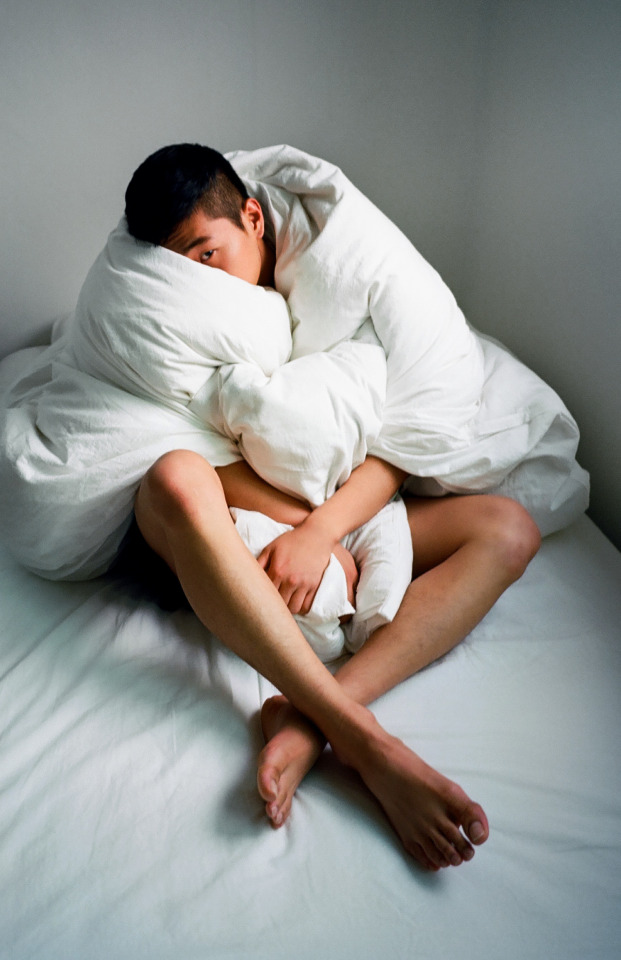
q: Please give a short introduction of yourselves. How did you meet and why did you decide to work together as a photographer duo?
a: HXO is a photographer duo consisting of Hao and Ozon. Hao works at an F&B brand as a brand marketer, and Ozon runs an interior design office.
We met in 2010 through social media that was trending in Korea at that time. We both found each other's film photography uploaded online interesting, and we got along quickly when we talked, so we became friends.
Our HXO duo project began with a playful and simple idea—whose photos will get more hearts on Instagram? We kind of wanted to be in competition with each other by photographing the same models but in a way as different as possible, and the contrast of time, day and night, seemed like an appropriate concept for our game. The project started in the late spring of 2016 and has been going on for over five years.
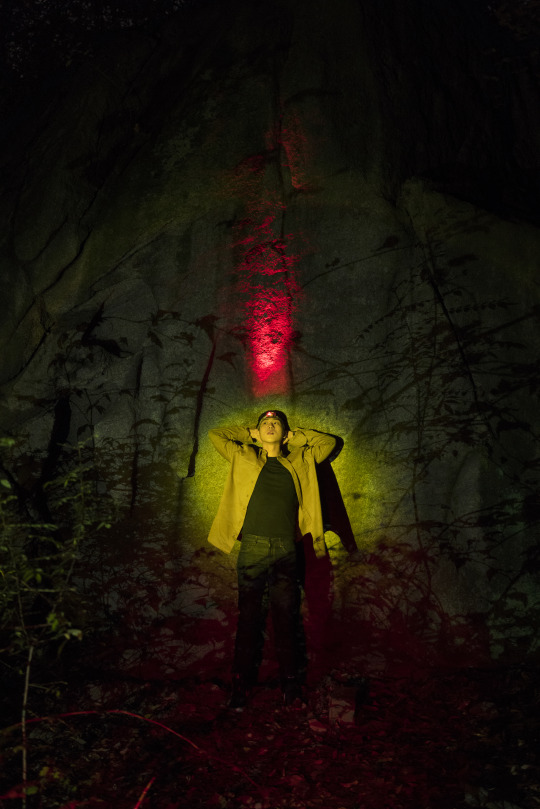
q: How did you get into photography?
Hao: During my undergrad days, a friend of mine in a photography club asked me to be her model. It was a fun experience, and seeing her work made me want to try photographing the images I would picture in my mind. So I bought a used film camera and started taking pictures. At first, I took pictures of friends and scenery around me. Later on, I became interested in shooting staged images, like planning the scene I wanted to capture in advance.
Ozon: I started taking pictures of classmates with my father's film camera in high school. That's how I began. Then when I printed the photos of friends that I liked, those photos felt like treasures to me, so I became attached to photography.
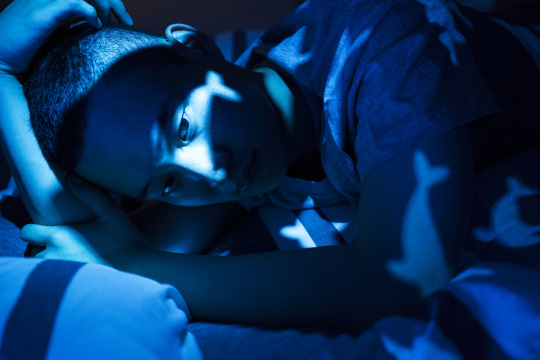
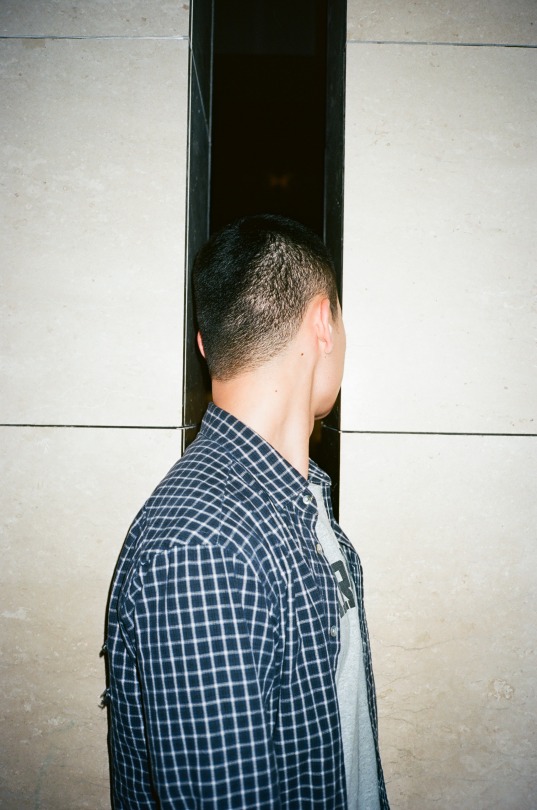
q: On your Instagram, you label your photos as night and day. Is there any idea behind "nights and days"?
Hao: As we mentioned when we introduced HXO, the day and night concept was chosen so that the two of us could take the most contrasting images with one model. In line with the concept, I shoot only at night and Ozon only during the day. Of course, there were a few times along the way when I took pictures during the day and Ozon at night, but essentially the part I take on is the nighttime, and Ozon takes the daytime. I only wrote "nights and days" because it is HXO, not OXH.
Ozon: I personally preferred nighttime photos before I started the HXO duo project. But our concept required a person to shoot only during the night, and I wanted to try daytime photography, like shooting only with natural light, without artificial lighting effects.
q: Your photos are often of guys portrayed in an intimate and sensitive way, How did you meet them?
a: It varies. Some of them we have contacted through Instagram DMs, and some are acquaintances. Our photography is not fashion photography, so most of the models we photograph are not professional models. It is not that easy to find models since we mostly shoot regular people.

q: What is your process like when making the portraits? Some photo shoots look quite spontaneous while others look more staged.
Ozon: I shoot spontaneously. I only use natural daylight to shoot, so it can only be spontaneous. Even if I check the weather in advance, sometimes the weather on the day of the shoot is different from the forecast, cloudy or rainy. On such days I improvise and photograph moods according to the weather. So from time to time, I am jealous of Hao for being able to adjust the lighting. Despite being an improvisational photographer, I don't transfer the model's true essence to the picture. I tend to project myself onto the model when shooting, so most of the model's expressions are mine as well.
Hao: I relatively shoot more staged scenes. I check the model's look before the shoot and develop a story that works well with the model. I usually write down the scenes that could tell that story in advance while often referring to movie stills of my favorite movies. I hope that my pictures look like a scene in a movie. Ozon and I prepare everything by ourselves; all the locations, costumes, and props. On top of all that, preparing the lighting for a night shoot sometimes feels like too much. So in those cases, I'm jealous of Ozon for using natural light.
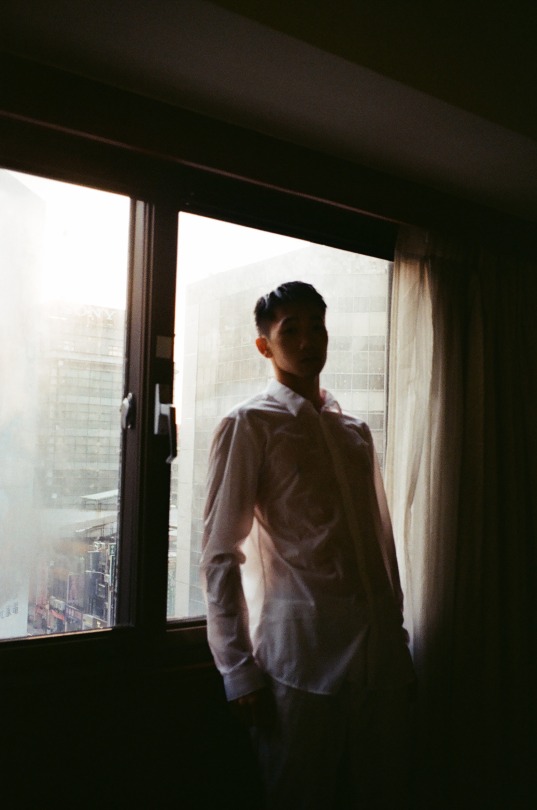
q: Do you prefer noodles or rice? Any favorite food?
Ozon: Pasta, udon, ramen, etc. I really love noodles. But my digestive system is becoming weaker as I age, so I am leaning towards rice more. My favorite food is fried chicken.
Hao: I also like noodles more. It's hard to pick one favorite food, but I usually like food with a lot of spice, like Indian curry or Huo Guo.
q: Upcoming projects or ideas?
a: Our work together has been going on for over five years. We've decided that it's about time to organize our work and bring it together. We plan to publish the photos—photos previously released on Instagram, unreleased photos, and newly taken photos—as a book this November. Luckily, we have been invited to Unlimited Edition (an annual art book fair held in Korea), so we plan to unveil our book there for the first time. If we have a chance in the future, it would be great if we could show our photobook in Singapore as well.
Ozon: I don't have any new ideas yet, but going forth, I would like to constantly photograph more people, for ten, twenty years more, as I have done so far. I would like to photograph a very large number of people like Gus Van Sant's photobook "108 Portraits" and do an exhibition.
Hao: I also want to continue with this project. It's fun to see the changes over time in my style of photography and the mood that I like. Before anything, I would like to finish the photobook production that we are releasing this year successfully, and I would like to hold an exhibition in relation to the book if there is such an opportunity.

q: Any music to recommend?
Ozon: My Funny Valentine by Chet Baker. Hao probably dislikes it because I play this music all the time wherever and whenever we are together.
Hao: I really love and listen to all kinds of music, but I especially like rock and electronica. The song I've been listening to the most lately is Desert Eagle by Silica Gel. And if I could recommend one more, I would choose A Pure Person by Lim Giong.

their Instagram.
Get more updates on our Facebook page and Instagram.
22 notes
·
View notes
Text
Interview #496: Hiroyuki Takenouchi

q: How did you first start with photography?
a: I liked drawing when I was a child, so I started taking pictures to collect materials for drawing, but soon I became more fond of photography.
q: For your photobook "Things will get better over time", why was the book printed in blue on blue paper? And was there a reason for the blank pages in between spreads?
a: It was originally an idea from the book designer, I thought it was a challenging endeavor. In Japanese, there is a word called "blueprint" that means a plan or a vision for the future. Together with a large number of blank pages, I think it is a mechanism to inflate dreams and delusions.

q: I have both photobooks for "Things will get better over time" and "The Fourth Wall", and I love both. I noticed that there are some photos that are repeated across both, but are presented differently. "The Fourth Wall" is full of life and colour while "Things will get better over time" is just one colour and almost faded into the paper. Was there a reason for this?
a: “Things will get better over time" comes first in the order of publication, but “The Fourth Wall” started production first, so I decided to make an orthodox photobook and show my work straight. We were focusing on it. I decided to make different books at about the same time, and I thought that I could create a different world by changing the way the same photos are shown.
q: I like how your photos seem direct and honest in your observations. Would you say it reflects you as a person in some way?
a: The photograph is from the photographer's point of view, and the subject is confronting the photographer, so I think it is greatly reflected.

q: You also often include animals and insects in your personal projects, and relate to them in a personal way in your writing. Why?
a: I've always thought it would be nice to be able to communicate with things that I can't communicate with, so I feel like I'm doing that in a pseudo manner.
q: In another interview you mention you prefer smaller digital cameras, why? Or what camera(s) do you like right now?
a: Because I carry the camera with me when shooting, I prefer something that fits my body better. Actually, I think it's good if my eyes are shutters or if everything can be completed with the iPhone. The camera I'm using most now is the Sony α.
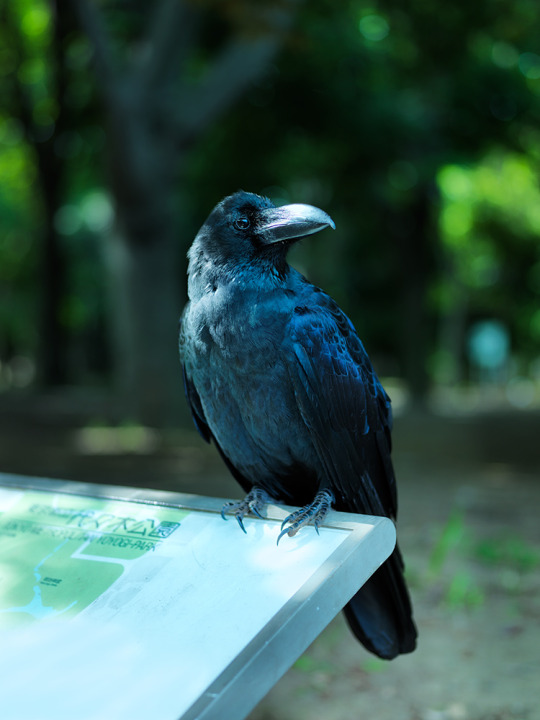
q: You shoot both personal projects and commercially. Do you feel there are similarities or differences when shooting for either?
a: When I'm on a commercial project, I'm sometimes asked to shoot in my own style, and at that time I try to relax my shoulders and shoot in a relaxed manner. But shooting a commercial project can't afford to fail, which may be the difference from a personal project. However, the tension can produce better results than the work. Nobody is in trouble if I can't shoot anything for a personal project that day.
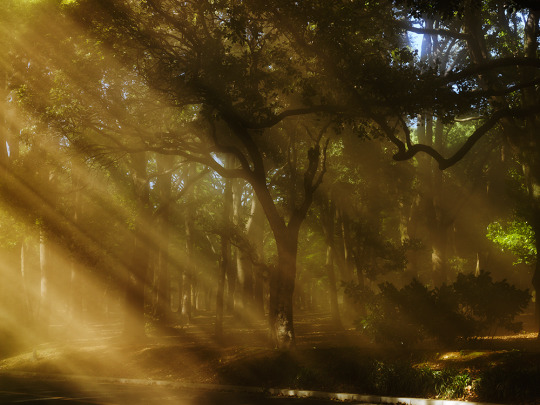
q: Upcoming projects or ideas?
I can't really talk about the next idea, but now I'm interested in video works and writing
q: Any music to recommend?
a: I often listen to the early music of SHINJI HARADA.

his website and Instagram.
Get more updates on our Facebook page and Instagram.
#Hiroyuki Takenouchi#nopefun#photographer interview#japanese photographer#japanese photography#photobook
344 notes
·
View notes
Text
Interview #495: Quince Pan
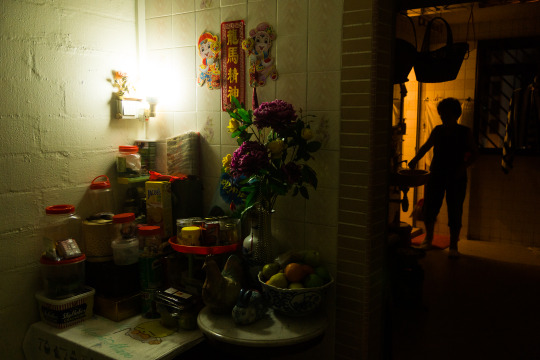
q: Give a short introduction of yourself:
a: I am Quince Pan, a documentary photographer born in 2000, currently based in Singapore. I am now waiting to enter university to study Philosophy, Politics and Economics.
q: What is your series "JBM" about? What was the process of making the series?
a: “JBM”, my family’s abbreviation of “Jalan Bukit Merah”, is a documentary photo project centred on my maternal grandmother, Lau Giok Niu, her cultural heritage and her HDB flat where I spent my childhood under her care. It is my first exhibited series and also my first serious long-term documentary project.
In 2015, I followed my grandmother to visit her hometown in Fengwei, Quangang District, Quanzhou City, Fujian, China. Bringing my camera along on the trip, I noticed that instead of shooting purely for fun or beauty, I would include certain objects (for example, a calendar on the wall) in my frames because they had historical significance. I submitted those Fengwei photos as my portfolio for the 2016 Noise Art Mentorship (Photography and Moving Images). I got selected, and my mentor, Jean Qingwen Loo, urged me to pursue a project which I could speak authentically about. Through her criticism, I learnt to further prioritise meaning over style. My grandmother and my childhood were topics close to my heart, especially as she cared for me during my childhood and gave me the gift of the 头北 Thâu-pak dialect, a unique variant of Hokkien from the Quangang District. Eventually, “JBM” was born as my mentorship capstone, and was exhibited at the “Between Home and Home” Noise Art Mentorship Showcase at Objectifs in 2017. I haven’t stopped shooting; that’s why it’s an ongoing long-term project!
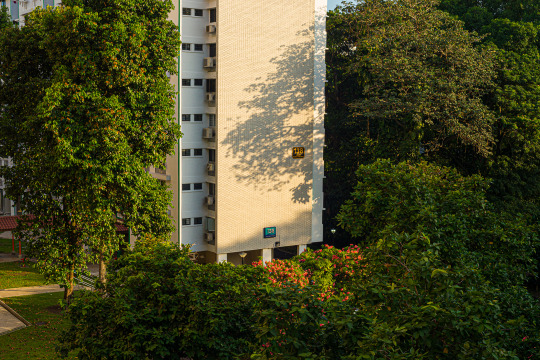
“JBM” contains a range of visual styles, ranging from photojournalistic fly-on-the-wall documentations of heated family discussions and visits by distant relatives from China to more tender images of sunlight at the void deck where my late grandfather’s wake was held in 2006. Rituals and festivities are anthropologically significant, so I pay particular attention to Chinese New Year, the Qing Ming Festival and the Winter Solstice, which my family celebrates. I also look at how other photographers document their families: Bob Lee, Nicky Loh, Bernice Wong, Brian Teo and Nancy Borowick.
More broadly, “JBM'' extends beyond photography and is a family history project. Since 2013, I have been researching the Quangang district, 头北 Thâu-pak dialect and my grandmother’s clan. I discovered that other descendants from her clan established an ancestral temple in Singapore, which initially stood on Craig Road but is now housed in a flat in Telok Blangah. I already did some fieldwork, interviews and preliminary documentation, which led to an article I published in April 2021 in Daojia: Revista Eletrônica de Taoismo e Cultura Chinesa. Maybe I will explore this in greater depth in future photo projects!
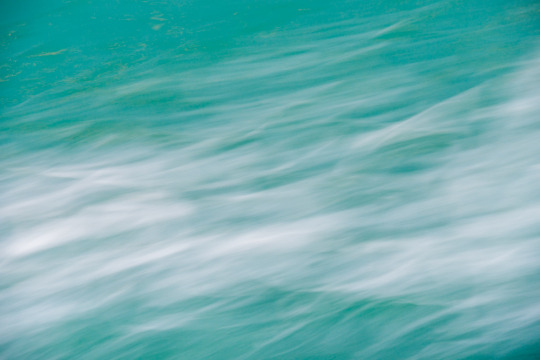
q: How did you get into photography?
a: When I was around seven years old, I loved to play with my father’s Fujifilm compact. As a young student, I hadn’t heard of terms such as “light painting”, “Dutch angle” and “rule of thirds”, but those were the techniques I subconsciously used in my photographs.
I entered the Noise Art Mentorship, as previously mentioned. During the school holidays, I worked as a media intern at Logue and as an assistant at Objectifs for the “Passing Time” exhibition and book by Lui Hock Seng. Through these work experiences, I learnt so much from Jean Loo, Yang Huiwen, Ryan Chua, Lim Mingrui and Chris Yap: news angles, editorial writing, scanning and touching up negatives and slides, colour management for print, liaising with clients and issuing invoices, among other skills. As part of the Noise Art Mentorship, I was given a copy of “+50” by the PLATFORM collective, which opened my eyes to diverse approaches within the documentary genre. I started to regularly attend talks at Objectifs and DECK, where I got to know people in the local photography scene, particularly in the documentary tradition.
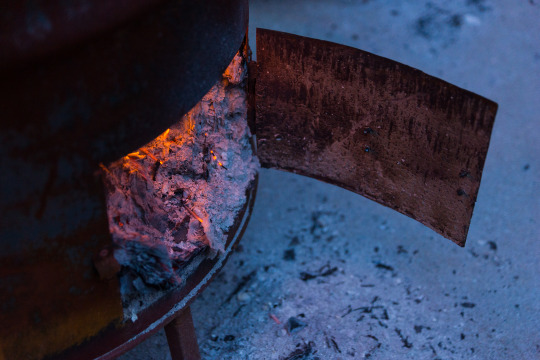
q: You also do videography. How do you see it in relation to your photography?
a: Videography requires a different way of seeing and thinking compared to photography, because video has additional temporal and auditory dimensions. With photography, I don’t have to think about how long I want a scene to be, what foley and B-roll I want to overlay, or have a storyboard in my head before heading out to shoot. In that sense, photography is more reactive to and receptive of situational contingencies because it requires less pre-planning.
Also, photography can be a solitary endeavour, but it is quite difficult to make films alone, and the schoolmates I used to make films with have since embarked on separate paths in life. However, photography and videography share the same basics as visual media: composition and sequencing.
Fundamentally, I see myself as a documentarian, and this applies to any medium I work in, be it photography or videography, or even writing. The end goal is to record and share history by telling stories from lesser-known perspectives. Thus, the topics of my video projects are similar to the topics of my photo projects; sometimes I do both side by side! The films I made were all documentary shorts of places which do not exist anymore, such as the Hup Lee coffee shop at 114 Jalan Besar and the old Sembawang Hot Spring before NParks took over the site from MINDEF and redeveloped it.
Currently, I am working as a videographer for Sing Lit Station’s poetry.sg archive. Thankfully, this job can be done solo!

q: What or who is inspiring you right now?
a: Bob Lee, for being an amazing father and spreading hope and joy to others through his images. Alex and Rebecca Webb, for pairing literature with photography. Tom Brenner, for approaching photojournalism like street photography. Sim Chi Yin, for her international achievements and being both an academic and a practitioner. Brian Teo, for being an eminent contemporary. Last but not least, Kevin WY Lee’s advice, “CPR: Craft, Point, Rigour”, which I try to benchmark my work against.
q: Upcoming projects or ideas?
a: Nothing concrete on my mind so far. I am just going to see where life takes me and what topics life makes me want to explore or talk about.
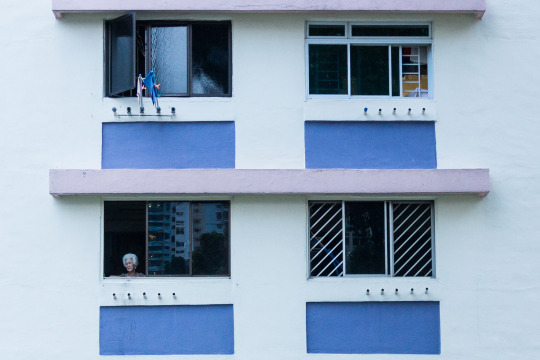
q: Any music to recommend?
a: First and foremost, my fight song: “倔强 Stubborn” by Mayday. A close second, Queen’s 1986 “Under Pressure” live performance at Wembley is a transformative experience. The catchy “他夏了夏天 He Summered Summer” by Sodagreen brings out the grandeur in the mundane. “Silhouette” by KANA-BOON and “Everybody’s Changing” by Keane remind me of the fragility of life and time. I also like The Fray, Kings of Leon, Last Dinosaurs, Stephanie Sun, Tanya Chua, and the Taiwanese indie band DSPS.

his website.
Get more updates on our Facebook page and Instagram.
265 notes
·
View notes
Text
Interview #494: Ryan Frigillana

Ryan Frigillana is a Philippine-born lens-based artist living and working in New York. His work focuses on the fluidity of memory, intimacy, family identity, and visual culture, largely filtered through the lens of race and immigration. Embracing its plasticity, Frigillana explores photography’s relationship to context as a catalyst for thematic dialogue.
His first monograph, Visions of Eden, was published as two editions in 2020, and is held in the library collections of the MoMA, Getty Research Institute, and Smithsonian among others.
We spoke to find out more about Visions of Eden, his love for photobooks, and photography as a medium for introspection.
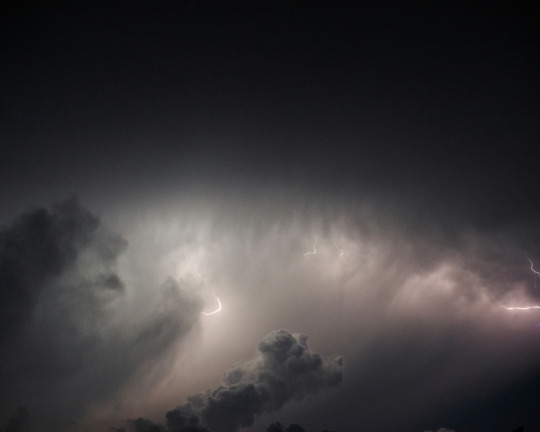
Lee Chang Ming
Ryan Frigillana
Thanks for agreeing to do this! As we’ve just arrived into the new year, I want to start by asking: how did you arrive at photography and how has your practice evolved so far? Your earlier work was anything from still life to street photography, but your recent work seems to deal with more personal themes.
It’s my pleasure; thank you for having this conversation with me! Wow, looking back at how I’ve arrived at this point makes me feel so grateful for this medium, and excited to think of where it will lead me from here. I came to photography somewhat late. I was initially studying to become a nurse and was set to start a career in that field, but I found myself unhappy with where I was going. My mother was a nurse and I know what goes into being one; it’s not an easy job, and I respect those who do it, but my heart wasn’t in it. I found photography as a creative outlet during that stage of my life, and I’ve clung onto it ever since.
My first exposure to photography (no pun intended) came in the form of street and photojournalism. I would borrow books from the library a lot, consuming works by Magnum and other photographers working in that tradition. At the time, it was all I knew so that’s what I tried to emulate. Even early on in my undergrad career, these modes of creation were reinforced by curriculum and by what I saw from my own peers. My still-life work branches off of that same sentiment: the only names that were ever thrown around by professors were Penn and Mapplethorpe, so that’s who I studied. Thankfully over the years, I’ve been able to broaden that perspective through my own research. Though I don’t necessarily pursue street or constructed still-lifes anymore for my personal work, I’d like to think my technical skills (in regard to timing, composition, light) owe a debt to those past experiences.
I suppose now I’m starting to explore how photography can be used as language, to communicate ideas and internal conflicts. I’m thinking more about the power of imagery, its authorship, its implications, and how photographs have shaped, and continue to shape, our reality. That’s where my work is headed at the moment.
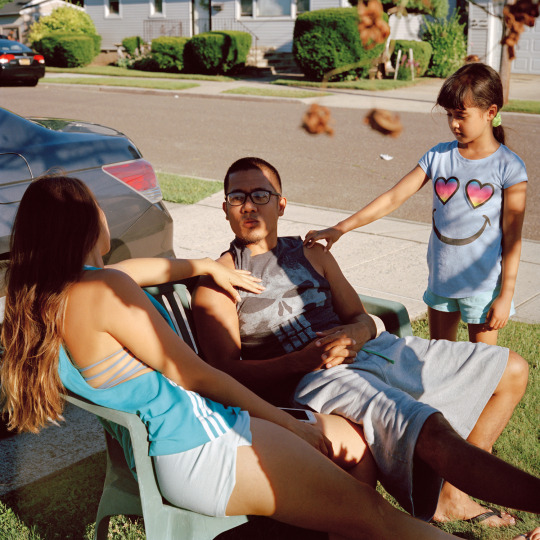
I liked how you mentioned photography as a language, which calls into question who we are speaking to when we make images and what kind of narrative we construct by putting photographs together.
In your work “Visions of Eden”, you trace your family’s journey as first-generation Filipino immigrants in America. I was quite struck by how you managed to link together original photography, archived materials and video stills. To me, with the original photography there was a sense of calm and clarity, perhaps in the composition. But with the archived material it was like peering through tinted glass, and the video stills felt like an unsteady memory. What was the editing process like for you and how did you decide what to include or exclude?
For me, editing is the hardest part about photography. Shooting is the enjoyable part of course because it can feel so cathartic. Sometimes when I shoot it feels almost like muscle memory in the sense that you see the world and you just react to it in a trained way. But with editing, it’s more of a cerebral exercise. More thought is involved when you have to deal with visual relationships, sequence, rhythm, and spacing, etc. The real creation of my work takes place in the editing process. That’s where the ingredients come together to form an identity.
When creating this identity, I not only have to think about what I want to say, but also how I want to say it. It’s like speaking; there are numerous ways you can communicate a single sentence. How are images placed in relation to one another? How large are they printed, or how much white space surrounds it? Are the images repeated? What’s on the following page? The preceding page? Is there text? How are they positioned on the spread? All of these little choices impact the tone of your work. And that’s not even mentioning tactile factors like paper stock or cover material. I think that’s why I have such a deep love for photobooks because 1) they’re physical objects and 2) someone has obsessed over every aspect of that object.
I’m aware that my photographs lately have a quiet, detached, somewhat stripped-down quality to them. I think that’s just a subconscious rejection of my earlier days shooting a lot of street where I was constantly seeking crowded frames and complexity in my compositions. As I’ve grown older, I realize less is more and if I can do more by saying less, that’s even better. Now, the complexity I seek lies in the work as a whole and how all these little parts can form something fluid and layered, and not easily definable.
For Visions of Eden, I wanted the work to feel somewhat syncopated and wandering in thought. That meant finding a balance between my quiet static photographs and the movement and energy of the video stills, or balancing the coldness of the illustrations with the warmth of the family snapshots. The work needed to be cohesive but have enough ambiguity for it to take life in someone else’s imagination. Peoples’ lived experiences in regard to immigration and religion are so complex that they can’t be narrated in any one definitive way. Visions of Eden, hopefully, is a rejection of that singularity.
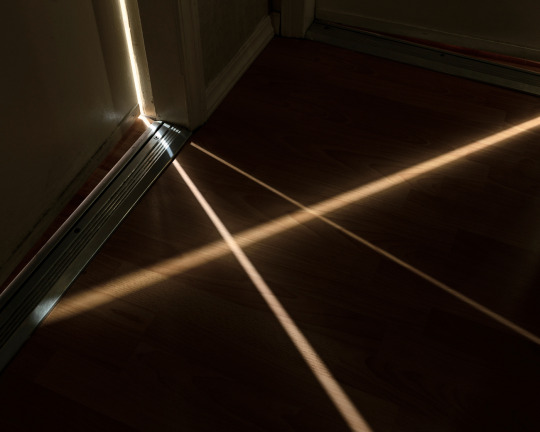
Yes, there’s definitely something special and intimate about flipping through a photobook! For your monograph, you recently released a second edition which is different from your first (redesigned, added images, etc.). Why did you decide to make it different? Was the editing mainly a solitary process?
The first edition was a partially hand-made object. Illustrations were printed on translucent vellum paper and then tipped into the gutter of the book. When you flip through the pages, those vellum sheets would overlap over certain images, creating a collage-like effect. That was my original concept for this book. Doing this, however, was so laborious and time consuming, and not to mention expensive! Regretfully, I wound up making only twenty copies of that first edition. I wanted the work shared with a wider audience so that’s why I decided to publish a second run.
The latest edition is more of a straight-forward production without the vellum paper. With this change in design, I had to reconfigure the layout. I took liberties in swapping out some images or adding new ones altogether. Also, a beautiful afterword was contributed by my friend, artist, writer, and curator Efrem Zelony-Mindell. I still feel so fortunate and grateful to have had my work seen and elevated by their words in my book.
For the most part, yes editing is quite a solitary process for me. But there does come a point when I feel it’s ready, where I share the work with a few trusted people. It’s always nice to have that outer support system. Much of Visions of Eden was created during my time in undergrad school so I had all sorts of feedback from peers and professors which I’m grateful for. But in the end, as the author, you ultimately have the final say in your work.
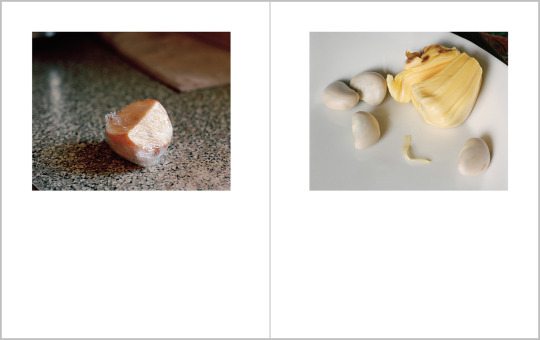
Given that Eden is a starting point and metaphor in the work, I was thinking about ideas of gardens, (forbidden) fruit, and movement of people.
How do you view yourself in relation to your place of birth? In your series, I see the most direct links in the letters, old photos where tropical foliage is present in the background, and the photo of the jackfruit (perhaps the only tropical fruit in this series).
I came to America when I was very young, about five years old. For my family and for many other families still living in the Philippines, America is seen as a sort of ideological Eden: a land of milk and honey, of wealth and excess. We all know that’s far from the truth. Every Eden has a caveat, a forbidden tree. Which leads me to ask: as an immigrant living in this country, what fruits were never intended for me?
I honestly don’t remember much about my childhood in the Philippines aside from fleeting memories of my relatives, the sounds of animals, the smell of rain and earth, the taste of my grandmother’s cooking. The identity that I carry with me now as a Filipino is not so much tied to the physical geography of a place but rather it is derived from a way of life, from shared stories, in the values we hold dear, passed on from generation to generation. This is a warm flame that lives on in me to this day as I write these words thousands of miles away from where I came.
Photographs have a way of shaping our memory and our relationship to the past, which in turn affects how we engage with the present. The family photographs and letters used in my book act as anchors in a meandering journey. They serve as landmarks that I can return to whenever I feel lost or need assurance so far away from “home”. They give me the comfort and affirmation that I need to navigate a space where I never really felt I belonged. The spread in my book that you mentioned—the jackfruit on one side, and the Saran-wrapped apple on the preceding page—was a reference to my duality as both Filipino and American. It’s a reminder and an acknowledgment that I am a sum of many things, of many people who have shaped me. If I flourish in life, it’s because my roots were nourished by love.
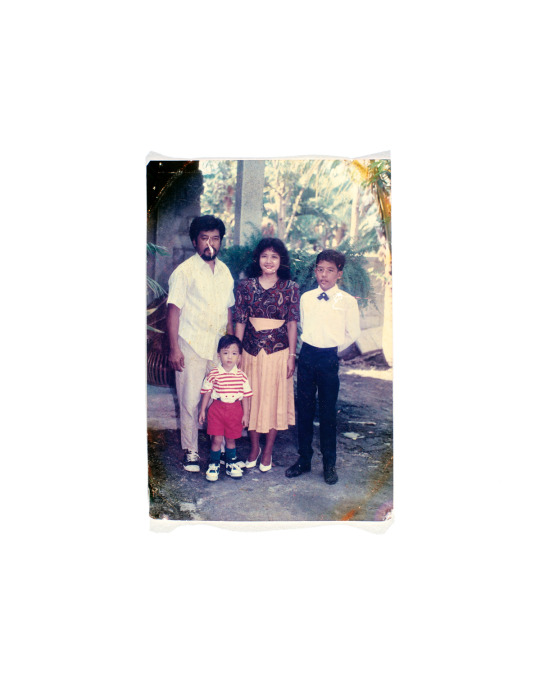
I like how you mentioned photos as anchors or landmarks. Isn’t that why we create and photograph? To mark certain points in our lives and to envision possible futures, like a cartographer mapping an inner journey. Do you feel like you and your relationships with those you photographed changed through the process of making your works?
When my parents took pictures of our family, it wasn’t done solely in the name of remembrance; it also served as an affirmation of ourselves and our journey—a celebration. Every birthday, vacation, school ceremony, or even the seemingly insignificant events of daily life were all photographed or video-taped as a way of saying to ourselves, “Here we are. Look how far we’ve come. Look at the life we’ve made. And here’s the proof”.
Now, holding a camera and photographing my family through my own lens still carries all of that celebratory joy, but with so much more possibility. Before I really took photography seriously, I never realized its potential as a medium for introspection, but that’s ultimately what it has become for me. In taking pictures of my family, I not only clarify my own feelings about them, but the act of photography itself informs and builds on my relationship with each person. The camera is not a mere recording device, but a tool for understanding, processing, and even expressing love...or resentment. Though I may not be visible in my pictures, my presence is there: in my proximity, my gaze, my focus.
Does all of this impact my relationships? Absolutely. Photographing another person willingly always demands some degree of trust and vulnerability from both sides. There’s a silent dialogue that occurs which feels like an exchange of secrets. I think that’s why I often don’t feel comfortable photographing other people unless we’re very close. Usually my family is open enough to reveal themselves to me, other times what they give can feel quite guarded. That’s a constant negotiation. After the photograph is made though, nobody ever emerges the same person because each of us has relinquished something, no matter how small.

Being self-reflexive in photography is so important. I agree it should be a constant negotiation, but it’s something that bothers me these days – the power dynamic between the photographer and photograph, particularly for personal and documentary projects. More significantly, after the photograph has been made, who is really benefiting. But I guess if we are sensitive to that then perhaps we can navigate that tricky path and find a balance.
Right, finding that balance is key and sometimes there are no clear-cut answers. That power dynamic is something I always have to be mindful of. As the photographer, you are exercising a certain role and position. At the end of the day, you’re the one essentially “taking” what you need and walking away. There’s an inherent violence or aggression in the act of taking someone’s picture, no matter how well-intended it may be. This aggression carries even greater weight when working, as you say, in a genre like documentary where representation is everything.
I remember an undergrad professor of mine, Nadia Sablin, introducing me to the work of Shelby Lee Adams—particularly his Appalachian Legacy series. Adams spent twenty-five years documenting the disadvantaged Appalachian communities in his home state of Kentucky, visiting the same families over a long period of time. Though the photographs are beautifully crafted, they pose many questions in regard to exploitation, representation, and the aestheticization of suffering. He is or was, after all, an artist thriving and profiting off of these photographs. Salgado is another that comes to mind. This was the first time I really stopped to think about the ethics of image-making. Who is benefitting from it all?
I think the search for this balance is something each photographer has to reckon with personally. Though each situation may vary with different factors that have to be weighed, and context that must be applied, you can always ask yourself these same ever-pertinent questions: am I representing people in a dignified way, and what are my intentions with these images? Communication (listening), building relationships, acknowledging your power, and respecting the people you photograph are all foundational things to consider when exercising your privilege with the camera.
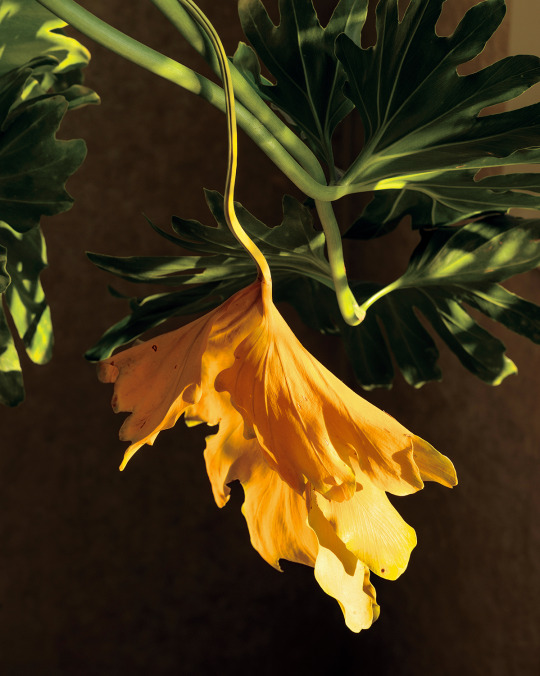
Well said! The process of making photographs can be tricky to navigate yet rewarding. Any upcoming projects or ideas? What’s keeping you busy these days?
Oh, let’s just say I’m constantly juggling 3-4 ideas in my head at any given time, but ninety percent of the time they don’t ever lead to anything finished haha. This past year has been tough on everyone I’m sure. I’ve been dealing a lot with personal loss and grief and the compounded isolation brought on by the pandemic, so for months I’ve been making photographs organically as a subconscious response to these internal struggles. It’s more of an exploration of grief itself as a natural phenomenon and force—like time or gravity. Grief is something everyone will experience in life and each of us deals with it differently, but in the end we have to let it run its course. I see these photographs as a potential body of work that could materialize as a zine or book one day, so we’ll see where that goes.
Other than that, I’ve been working on an upcoming collaboration project with Cumulus Photo. Speaking of which, I saw your photograph featured in their latest zine, running to the edge of the world. Congrats on that! It’s beautiful. But yeah, just trying my best to keep busy and sane, and improving myself any way I can.

Thanks! Looking forward to your upcoming projects! Last question: any music to recommend?
I feel like my answer to this question can vary by the week. I go through phases where I exhaust whole albums on repeat until I get tired of them. So I’ll leave you with the two currently on my rotation: Angles by The Strokes, and Screamadelica by Primal Scream.
Thank you for your time!
Thank you for a lovely discourse. I had a lot of fun!
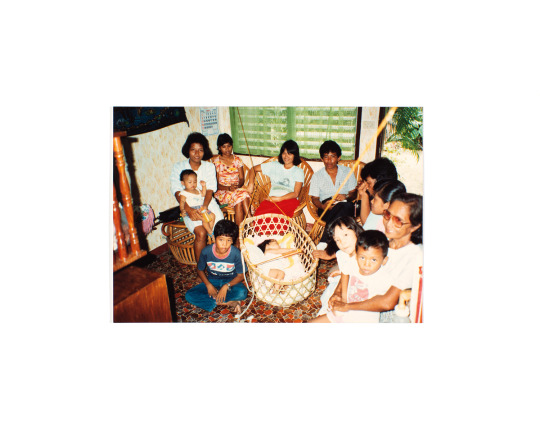
his website and Instagram.
Get more updates on our Facebook page and Instagram.
#Ryan Frigillana#nope fun#new york#photographer interview#artist interview#Contemporary Photography#Visions of Eden#PhotoBook
330 notes
·
View notes
Text
Interview #493: Chris Mann

q: Give a short introduction about yourself:
a: I’m a photographer from South Yorkshire in the North of England, currently living in London.
q: You work almost exclusively with black and white 35mm film, darkroom processing and silver gelatin prints. Why do you use this process?
a: I’m hugely drawn to the tactility of it all. Working with film, paper and importantly, light, continues to offer me a heightened experience and understanding of how I make images. It just feels more authentic for me. Like many others working in the same way, I fell in love with the meditative time in the darkroom; stepping away from the glowing screen and slowing the process down. It can be time consuming, but it’s in this slowing down that I’ve built a strong attachment to my work and continue to define where I want to go with it.

q: I liked how you describe your work as confining your "photographs to graphic elements that trigger curiosity and stimulate the viewer's imagination". What is the reason behind this? Do you see it as a form of detachment from you as an individual?
a: A big turning point for me was discovering that a photograph could do more than just duplicate a moment in reality as the eye sees it. Photography is by its very nature an act of elimination, and I’ve found myself gravitating towards the work of artists, filmmakers and photographers who take this concept one step further in their work; embracing a lack of dialogue and context, calling on the individual viewers’ own top-down processing to ‘fill in the blanks’. It’s for this same reason that I work predominantly with black and white, avoiding any presuppositions that colour might convey. I’m drawn to enigmatic images and want to make photographs that kind of have an agency of their own, and a ‘meaning’ or interpretation that varies from viewer to viewer.
With regards to your question about individual detachment, I’d say it’s more about detachment from the specific subject or event. I’m equally concerned with image-making as I am photo-taking; creating work that isn’t necessarily about documenting a specific moment of time in my life.

q: You mention you are interested in open ended images and photography as a way to subtract from reality. Would you say you prioritize aesthetics over subject matter?
a: I’m ultimately looking for ambiguity, regardless of whether this is achieved through subject matter or aesthetics. Aesthetically I tend to lean towards chiaroscuro, however I wouldn’t say that I prioritise this over subject matter. On many occasions, it’s been following this aesthetic that has actually led me to certain images, with light and shadow transforming subjects that otherwise wouldn’t grab my attention. On the other hand, if the subject matter is strong enough, then the light may not be my main concern. The two go somewhat loosely hand in hand for me.
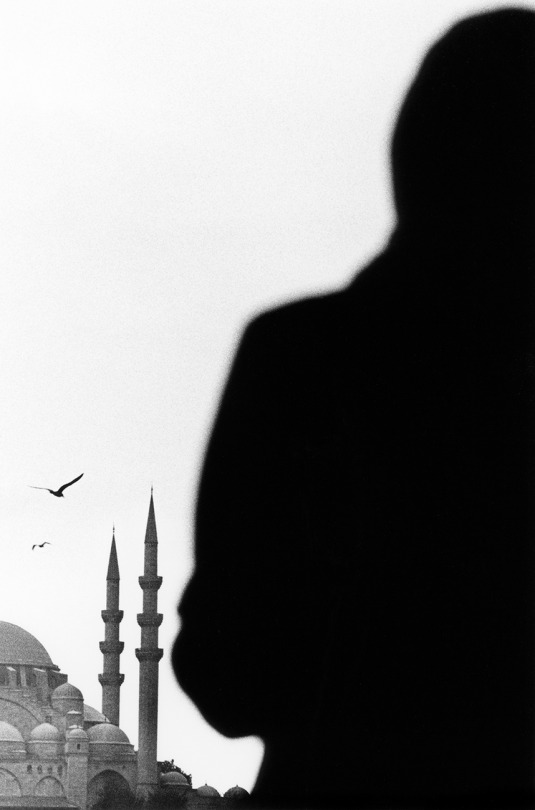
q: For me, abstract photos work as a way to decontextualise moments of beauty from their environment, which relates to the idea of timelessness. Is this important for you in your practice?
a: I believe timelessness can occur as a side effect of decontextualization and detachment from the subject. I’m mindful of how much context my images reveal, and I consider it a bit of a balancing act between information that may or may not render the image as ‘timeless’. Shooting in cities makes this specifically challenging for me, with signs of the times everywhere and endless possibilities to remove specific elements from the frame.
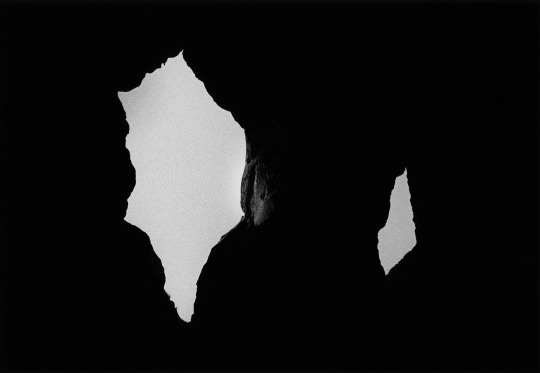
q: Upcoming projects?
a: I had a couple of projects lined up in 2020 involving travelling that, thanks to the obvious, never happened. This has actually been a blessing in disguise for me, affirming the importance of my making images in a non-linear fashion. This year I’m looking forward to getting stuck into shooting, printing more work in the darkroom, travelling (hopefully), and seeing where it all takes me.
q: Any music to recommend?
a: Recently I’ve had Krakow Loves Adana, Angelo de Augustine, and Mark Kozelek on repeat. Todd Ritondaro’s ‘Frame & Sequence’ podcast also never fails to deliver inspiration.
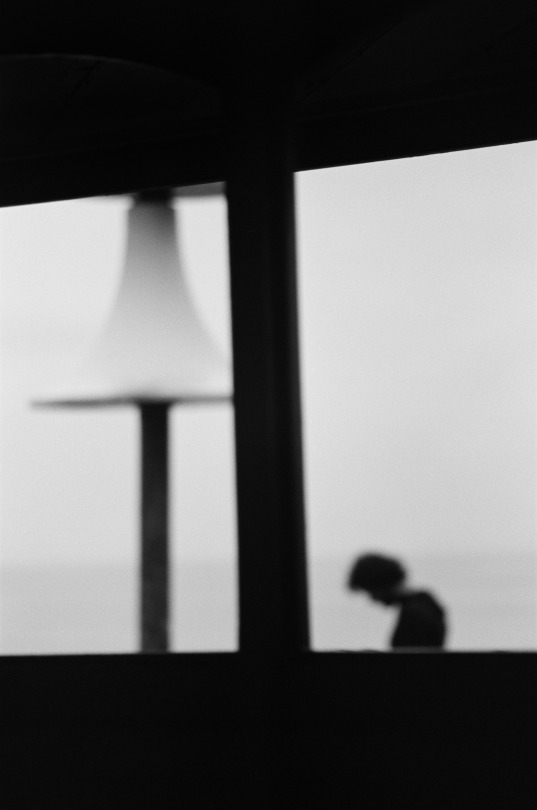
his website and Instagram.
Get more updates on our Facebook page and Instagram.
#nope fun#photographer interview#artist interview#chrismann#Black and White#Contemporary Photography#abstract photography#bw_photooftheday#bw#uk
8 notes
·
View notes
Text
Interview #492: Edra Galzeran

q: Give a short introduction of yourself:
a: My name is Edra Galzeran, I am a photographer from Terrassa, a small town near Barcelona. In my teenage years this industrial city had little appeal for an awakened mind; it was just a place to run away from. So It was then that I started my escapades to Barcelona, a place where things happened. I left the calmness of my town, to plunge into the excitement, the madness of the city. At some point Barcelona also began to feel smaller and so began a long journey of ten years during which I had the opportunity to live in ever larger cities such as Berlin, Moscow and Kiev with the exception of Venice.
In the meantime, I studied Translation and Interpreting and began to take photographs and paint. All these cities fascinated me and still do, probably because they are places where the West meets the East. It’s funny how now, some years later, I have changed the excitement by the silence since I now live in a small town. In a way, I have returned to my origins. Now I love the closeness to nature, the Waldeisamkeit, being alone and wonderful in the forest.

q: How has the past year been for you?
a: This terrible year was undoubtedly a turning point for me in many ways. On the one hand, the calm caused by the confinement, the slowing down of work, gave me the opportunity to become a de facto photographer, to show my work to the world. I have always photographed, but I could say that the germination of my capacity as a photographer is in Ukraine because there I started to really “see”. I bought my first SRL camera and started to walk and photograph what was around me, what caught my attention even If I did not think about becoming a photographer at that time. Things would start later, a few years after I returned to Barcelona in 2008. I had a lot of material that I had collected over the years, I did a workshop on analog photography and at that time I started to imagine the idea of becoming a photographer. I certainly already was, but it’s always difficult to say it out loud, when you are self-taught. Later it was difficult to find time to make a website, etc, because of my work, because of time constraints. However during the confinement I had to stay at home and had a lot of time to work on my new career.
On the other hand, this year has shown the fragility of human beings and our way of life has changed completely. The Covid has equaled us all more or less in disgrace. I personally was not affected by the disease, nor was anyone around me, although I had to face a family tragedy that kept me on my toes for almost three months.
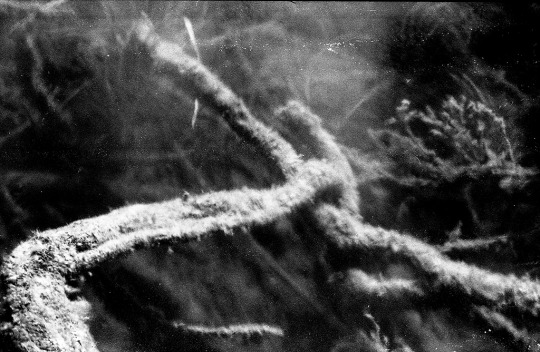
q: What is your series "Immram" about?
a: The word “Immram” is an old Irish word that usually means "journey". At the same time it is the name of a kind of story from Irish literature. These stories are about the sea voyage of a hero to the Otherworld. They were mostly written in the Christian era (8th century), but still preserve elements of Irish mythology.
Immrams focus on the exploits of heroes in their search for the Otherworld, which in these cases is located on the westernmost islands of Ireland. The hero sets out on his journey to experience adventure or fulfill his destiny and usually stops at other fantastic islands before reaching his destination.
My project Immram is a journey into the Otherworld, to my own Otherworld, it is a journey between past and present, between truth and fiction, between paganism and Christianity. It is my winter journey to an old, hostile island in the west of Ireland, where all kinds of beliefs are permeable. It is the smallness of man in the face of a nature steeped in fatalism.

q: In your series “Flor de marge”, you revisited photos you took more than a decade ago in Ukraine. What was the process like for you and what did you rediscover? Do you feel you photograph differently now?
a: It was all part of the same process of creating myself as a photographer. During this slow period of confinement, I began to look at the material I had produced over the years, but it also brought to mind all the forgotten photos that I had taken in Ukraine. It was a surprise to discover that I was already a photographer back then. I found some interesting pictures. When I looked at them, it was like seeing the person I was ten years ago. It was very revealing. I saw the gaze I had then; I saw a harsh reality that unfortunately is shaping our days more and more, at least in Spain.
As for photography, things are quite different today. Paradoxically at a time when everyone shamelessly exposes their private lives in the social media, no one wants to be photographed in the street. I do not think that is so terrible. I remember a time when I lived in the middle of Barcelona, in the Gothic quarter, near the Plaça Real, and dozens and dozens of tourists were loitering around. I often heard the click of the camera, and probably I will be seen in many pictures with my always loving red scarf.
Today I photograph differently; I have shifted the street photography of my beginnings in favour of introspective photography. People are becoming more and more inaccessible, at least in Western countries and it is difficult to capture these special moments. When you have to ask for permission, all the magic of the moment disappears. But there is one wonderful exception, I am thinking now of Katty Grannan, a photographer who does great portraits of people on the street who want to be photographed. My new projects are more oriented towards nature, maybe because I now live two minutes away from the forest. They are more introspective, the human presence has become more residual.

q: You mentioned that you are also a painter. Do you see a link between your photography and painting?
a: Perhaps in the dominance of strong contrasts and in a certain tendency, especially in more recent works, towards pessimism, in line with the times, although I am a rather cheerful person in my everyday life. In any case, I believe that I am in a phase of experimentation in both photography and painting.
q: Upcoming projects or ideas?
a: I have several projects in mind, but the most advanced is "Cal y silencio" (Lime and silence). This project deals with the phenomenon of depopulation of rural areas in Spain. The centre of Spain is a vast plateau that covers most of the national territory, a place with extreme temperatures both in winter and in summer, where only the 15% of the population live in the 53 % of the territory. In recent decades there has been a migration to the major cities of the periphery and to the capital, Madrid. The rural world in Spain is a forgotten world full of dying villages, solitude, isolation, lime and silence.

q: Any music to recommend?
a: That is a pretty difficult question, because I listen to very different music from all times, from different styles and from many, many countries. Depending on my mood, I listen to music from Schubert's Winterrreise to Ravi Shankar, from The Doors to Bon Iver, from Chavela Vargas to Mina…I have long Spotify playlists that I like to play randomly. I also enjoy the discoveries of this platform, the last one yesterday, a Turkish version of the Russian song “Podmoskovnie Vechera” (Moscow nights) by Tülay German.

her website and Instagram.
Get more updates on our Facebook page and Instagram.
57 notes
·
View notes
Photo



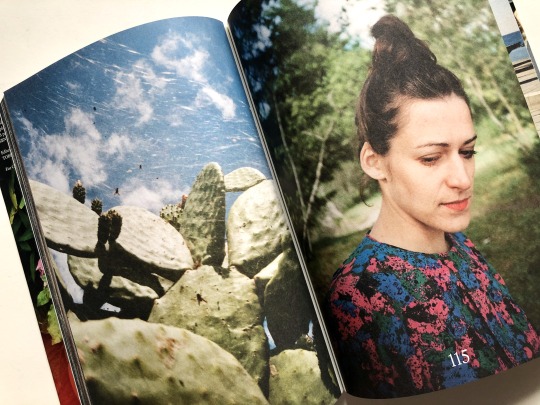
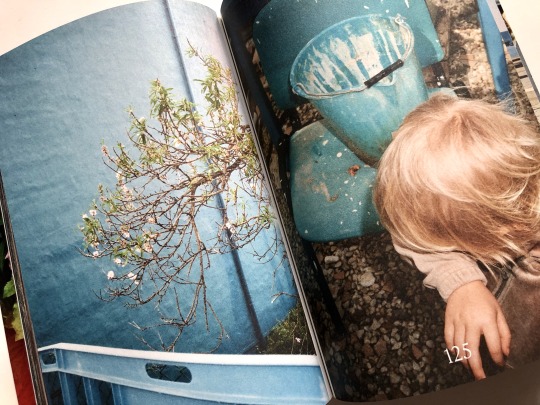

“Material” is a photobook by Tobias Kruse looking at instances and feelings that are hard to put into words, and a reflection on photography as a medium. Tobias’ photographs are taken from his immediate surroundings, with intimate portraits of his friends and family. There is a sense of transience and fragility in the moments captured: birds flying away, seasons change, children grow up, the fading light of the golden hour, and injuries that mark mortality on the body.
On the surface, the images seem to be diary-like snapshots of fleeting personal moments, but composed together in printed form, the photographs take on a different meaning.
Leafing through the book, there are subtle deliberate irritants that take away from viewing the images: images bleed over to the next spread not allowing the viewer to look at the “whole image”; Page numbers are printed over the photos, drawing the eye away from the subject matter; Instead of a linear narrative, images are seemingly sequenced according to colour. These distractions are perhaps reminders of photographs as material objects. Images do not show us reality as we hope to remember it, but are visual documents. To paraphrase what is written in German at the end of the book “the people and places in this book are real, their representations are fiction”. Photographs, and how we present or remember them, are mutable.
Find out more of his work here and on instagram. Get a copy here.
Check out more publication reviews at our bookshelf. Get more updates on our Facebook page and Instagram.
#Tobias Kruse#material#photobook#Kerber Verlag#OSTKREUZ#berlin#german photographers#nope fun#zine review#photobookjousting
16 notes
·
View notes
Text
Interview #491: Dennese Victoria
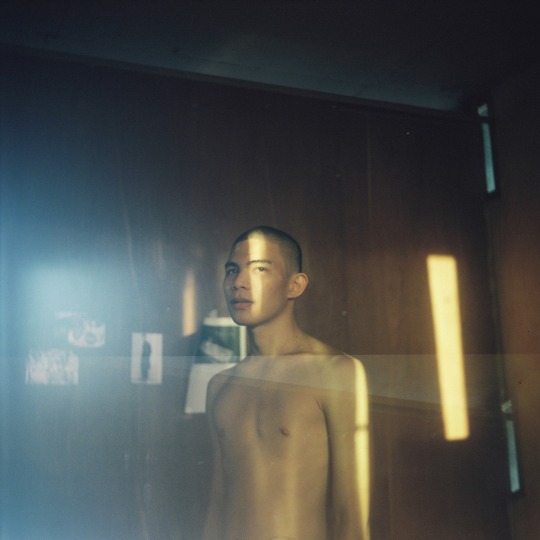
Dennese Victoria is an artist living and working in the Philippines. Working across photography, moving image and installation, her work touches on truth, memory, personal history, and the exchanges that occur between herself and those that are reached by the forming and the sharing of her work. More recently, she co-curated a projection showcase for the upcoming Angkor Photo Festival titled “Even though the whole world is burning”.
I first met Dennese when we attended the same photography masterclass in 2016. Listening to her talk about her photographs (both then and more recently when we spoke), I got the sense her pictures were like disclosures of her inner world—signposts leading us toward somewhere else, pointing toward something beyond the frame.
A day before her birthday, Dennese and I chatted on video call about her recent projects, and the importance of witnessing and creating space.

Lee Chang Ming
Dennese Victoria
How did you first start and how has your approach changed throughout your practice?
It’s weird because what happened was I was studying writing and then it was time for an internship, and I interned at a place that produces television documentary shows. A lot of the people there were photographers, and then that’s how I found out that there could be photo projects and stuff. So in the beginning I was influenced by that. And then I met friends of their friends and then I realised, “Oh, this art world is real.” In many ways it’s also a discovery…and sometimes I would like things from other people and think, “I can try that too.”
But there are also parts where I can’t do the things I used to be able to do anymore. Before it was easy for me to go to people to take pictures of them, but now it’s not so easy. I have to know that you want me to photograph you. I miss being able to just do it.
I feel it’s the same for me. Now I often question if I am actually benefiting more than the person being photographed, and I become hesitant.
I think that it’s bad also...that we overthink. Because we don't know that maybe we bring something to the people we meet.
I was at a workshop in 2012 and I was taking documentary pictures of this woman. I think she was under the influence of drugs. One day, I was just taking her picture and then she just stopped and then cried and said, “I don’t want to be here anymore.” So, to me it was like…I don’t actually know why I was there, I just know that I was there for a workshop. So that was when I began asking, “Why am I here? Why are you here?” So it became intense for me. It’s not nothing for us to be here.
Sometimes it’s so easy to forget that with photography we are not just observing something happening. Our presence there also changes or affects the situation. This links to your more recent projects which are more collaborative. For your “invitations” project, which was initiated at an artist residency at Los Otros, what was the process like?
I live very far from the city and at that time I realised that I was always stuck in these roles where I was the one giving, or I was the one travelling for people. So when this opportunity came, I kind of wanted to know: if I was in the middle, if I was not in my far away place, who would come?
At that time I was very tired. I was a teacher for about 240 students, and it was me, an introvert, going outside and just having to always reply to people. Also maybe because of a lot of life changes, I realised I wasn’t good at staying in touch. I change lives often and I lose a lot of people along the way. Not that I don’t care about them anymore...but I think I always just go forward. So I noticed that for the first time, and I wanted to learn how to welcome people.
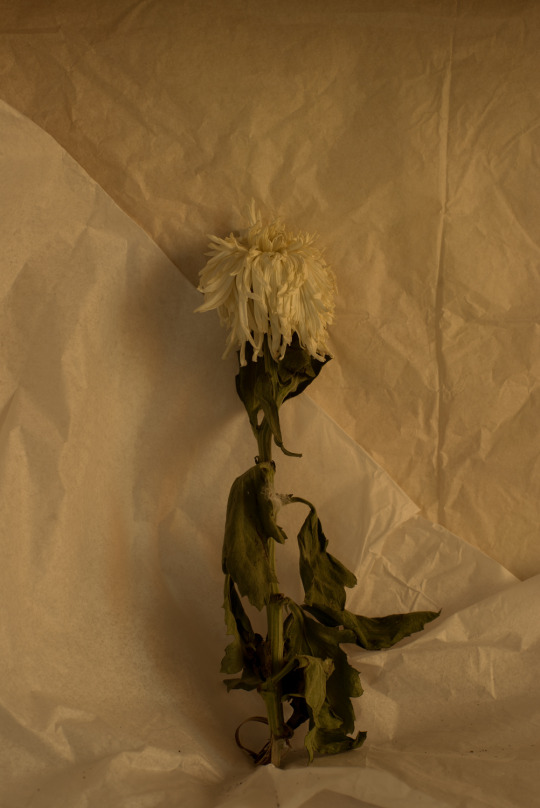
As part of your “flowers for” project, you invited people to send letters of unexpressed sorrow or grief. I also passed you a letter when we met in Germany last year—and to be able to put into words these bottled up feelings was very cathartic for me. Thanks for creating that space, or an excuse, to do that.
I think what you say about “excuse” is the right word, because it’s also about where do you bring the things you want to bring? For me, I feel a lot for others and that’s also like why I can’t stay in touch because it becomes too much. Sometimes with the recent art projects it’s structured, so I’m not going to be too overwhelmed—like there is that line and I’m not going to have to give up my life.
Because I really want to offer something, but, for example, especially for strangers, sometimes they think I’m too nice and then the next time they see me I’m in a different mood and then they expect the same welcome and then I’m not able to give it. Of course it’s impossible for me to always be the same thing, so I have sorrow around that also. So maybe [my practice] is also a kind of apology and an attempt to say, “I can’t do this anymore, but I have this, I hope it’s ok.”
In another interview you mentioned photography can be a window, or a door, or a bridge. Art can be a way to connect with others.
With my recent desire to collaborate, it’s also because I feel like this experience has given me a lot so I wanted to take more people along to understand and experience it also. I also noticed all my work is sad. I wanted to challenge myself to work with other intentions...other impulses.
Maybe some of your work is a little bit sad but I also feel like it’s optimistic as well.
Really?
I do feel like it is optimistic. For example, with your project “invitations”, there’s an underlying hope to see something better...maybe in a small personal way.
Yeah, because we did the curation [for the Angkor Photo Festival projection showcase], I looked at a lot of people’s work, and for many things the photographer who was there would have been the only witness. No festival will accept that picture, but they are the only witness. And their world has changed as a result, hopefully. They changed me by looking at their pictures. So I think there is still something.
For example, someone submitted his brother’s wedding photos, and that was really nice. We couldn’t select it, but the way he wrote about it…to me it was very moving that he thought it was for a festival. So many beautiful little things need to be witnessed.
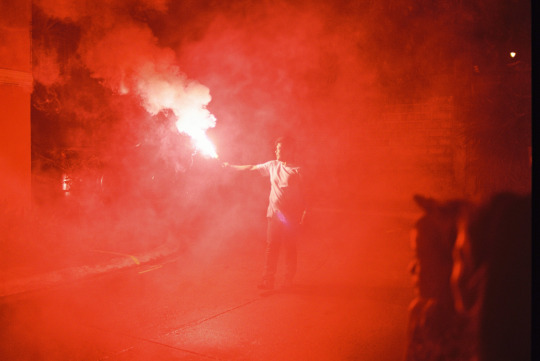
You mentioned curating that presentation for the Angkor Photo Festival. I like what you wrote for the open call, “If to photograph is built on taking things, what do we still have?” Did you find any answers?
I think we have a lot actually. Maybe it’s also about learning to value. For example, there were some works that I had seen before on Instagram, that have been validated by other places, and it’s harder for me to think, “Why is it special?” So I have to forget that I’ve seen it. And then it’s only when I’ve seen the rest of [the submissions], which I haven’t seen before, that I remember why it was special. So sometimes, at least for me, it has to be like a journey to visit a person’s work. Because there were a lot of beautiful things. Also because [the submissions] become similar: Whose house? Whose loneliness? Whose love? It’s all important.

For your project “i know you’re lonely, let me look at you”, you mentioned that it was a direct continuation of your “days spent with pretend family” project. In what way do you see it as a continuation?
It’s because when I was making “days spent with pretend family”, although I didn’t find the people that really wanted the same thing, I knew that it existed. For example, why do people want to be influencers? So I know that people want to be seen. Then, at the same time, I was thinking, “What if [my subjects are] revealing themselves this way but I take something else?” It was a kind of experiment about if I can really remember them the way they want to be remembered. Recently, whenever a new project comes to mind it’s always kind of going this way—how can I make it more participatory?
Does each project start with you trying to find answers to a question, then once you find some kind of resolution, then that’s enough? In other words, the project doesn’t have to be seen by a lot of people, but as long as it answers something for you on a personal level, then that’s the main thing.
Yes, I just recently realised that. When I was younger I thought I was photographing to remember, but now I realise that when I have a problem with something, I work with it. I use the art project to work with it, and then at the end of that I’m always transformed. I’m always a new person after this thing.
Because I know that I’m not going to think of grand photography projects, I always go directly and try to make it very meaningful for me and the people who will show up. So that has been my approach. If it becomes meaningful for me and whoever shows up, then that’s enough.

Your earlier works are about questioning truth and reality. I feel that questioning comes from a personal space, and it’s your attempt to put into words or pictures these doubts that you have.
Yes, because I feel like I always ask myself what I ask of others, “Am I being real?” And then I look at it and sometimes you find somethings that are not so nice about yourself. But then at least I know. I’m not scared about looking at what’s dark about me, so I can work through it.
For example, if you look at the whole set of “for/after”, like the first one you can see that I was kind of [retreating], but for me, looking at that, I was very moved to see the second one where I was the one like moving forward and not wanting to let go. So it tells me a lot about myself and maybe what I need or what I don’t want.

So it’s about being self-reflexive and about being honest.
Actually someone emailed a few years after I made “days spent with pretend family” and said she had the opposite project. What she does is she asks people to write her a biography, and then she finds photographers to take pictures of her in that alternate life of hers. She just wrote to me saying, “If you ever come back to Europe, tell me then maybe we’ll find a writer and you can take a picture of me.” So I was like, “I knew people like this exist!” I like that feeling, you know, when it’s like, “I can exist, I can be weird, I can do the things I want to do.” I’m always kind of looking for that feeling, and also trying to give people that feeling—that you can feel the way you want to...and that it’s ok.
Yeah, but sometimes in order to create that feeling you have to make that space for it to happen.
You have to make the space, and then you have to go there, and you have to let people in—which is not always easy.

This interview has been edited and condensed for clarity.
Her projects and Instagram
Get more updates on our Facebook page and Instagram.
#Dennese Victoria#nope fun#artist interview#Philippines#photographer interview#days spent with pretend family#Angkor Photo Festival#Los Otros
20 notes
·
View notes
Text
Interview #490: Al Palmer
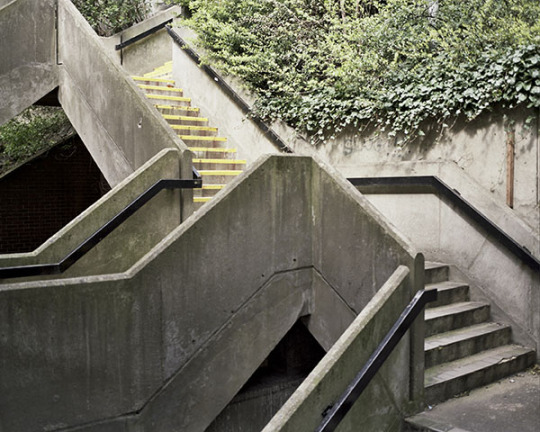
q: Give a short introduction of yourself:
a: Hello! My name is Al Palmer, I'm a photographer and book designer from Newcastle-upon-Tyne, United Kingdom.
q: What is your series “Crawling the Walls” about?
a: Crawling the Walls focuses on the frustration of being trapped. It's a contemplation on the inertia of pacing around a small area as trivial things start to become important and the walls start to close in. You could consider it a metaphor for the lockdown caused by COVID, even though it wasn't made with that in mind.

q: Your projects seem to revolve around built environments, landscapes and traces of people. You mention your work is about world building. Can you elaborate on this?
a: It took me a long time to realise this was what my work was actually about. I have a huge ego - most of my work is me building imaginary places from the fragments of existing places. I'm probably closer to being a collage artist than a traditional photographer, conceptually at least. I'm not a documentary photographer and there's absolutely no truth in what I do.
q: You run Brown Owl Press, an independent publisher of photobooks and zines. How and why did you start it?
a: I founded Brown Own Press in 2013. I'd had the idea for a while, but a trip to New York really confronted me with how many great independent publishers (A-Jump, Little Brown Mushroom, Session Press etc) were putting out incredible small-press work, as well as UK-based publishers like Cafe Royal and Antler Press. I drew up a shortlist of artists I'd like to work with, drew the logo (in a coffee shop in Honolulu, no less!) and put together a website. The first zine, Flood of Sunshine, was very much a test publication but people seemed to like what I was doing so I kept going. Seven years and twenty titles later, it's still going!
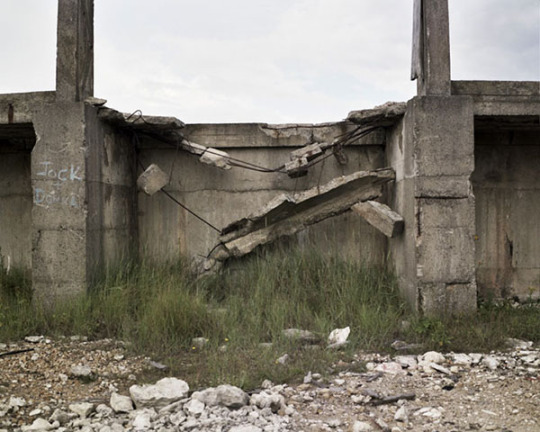
q: With Brown Owl Press, how do you select photographers to work with? What is your typical process of publishing/collaborating with them?
a: Primarily I reach out to photographers I like the work of. The photo world is a small place so if I don't know someone, I probably have a mutual friend with them. Sometimes people submit work and I decide to go with it. There's no set process, usually the photographer gives me an edit and I design it into a publication but occasionally there will be a zine ready to go that I just need to make a few adjustments to.
q: Would you say your imprint is an extension of your approach to creating, aesthetic, and vision?
a: I think it's more an extension of my values with regards to photography: quiet little poems in photographic form. I generally don't find loud work appealing to me.

q: How’s Newcastle-upon-Tyne? Any favourite hangouts?
a: Newcastle is a great city. I'm biased as I'm born and raised here but it's friendly, a beautiful city, small but packs an awful lot in. The Baltic (technically Gateshead but close enough) and Side Galleries are great, Pink Lane Coffee and Flat Cap's for coffee, Kiln and and The Tanners, Free Trade and Ernest for drinking in.
q: Upcoming projects or ideas?
a: I'm finishing off a body of work that has taken up most of the past two years called End Transmission. It's about the fidelity of visual messaging and how much information can be stripped away without the intended communication being compromised. It's quite conceptual for me, but I think it's really strong and I've edited very heavily. I'm currently looking for galleries to show it in 2021.
q: Any music to recommend?
a: I work in a record store and collect records... I ALWAYS have music to recommend. My favourite albums this year have been Cape Cira by K-Lone (rhythmic ambient techno), Rock by Ratgrave (lo-fi jazz funk), Mirrored Aztec by Guided by Voices (their thirtieth studio album...) and Single Demo by Cuir (catchy French synthpunk) although Glenn Astro, Open Mike Eagle and Yosa Peit still have albums about to drop and Theo Parrish's new album hasn't arrived through the post yet... 2020 has been a good year for music.

his website and Instagram.
Get more updates on our Facebook page and Instagram.
#nope fun#Al Palmer#photographer interview#brown owl press#independent publishing#uk#artist interview#self-publishing#small press#covid photography#Newcastle
4 notes
·
View notes
Photo

Hard to believe, but Nope Fun turns 10 years old this year!
Perhaps it's a good time to look back and take stock of things. Started on a whim, Nope Fun began as a photo blog, as an excuse to reach out to all the amazing artists that were inspiring me. Over the years, I'd had the privilege of doing interviews with over 480 people. Most significantly, some of them have become real life friends! I think that's the real success of this project, to be able to connect and find like-minded people.
Nope Fun then extended to independent publishing as a parallel to my own interest in printed matter, and has led me to even more friends that I met at art book fairs and events. As André Breton fittingly declared, "One publishes to find comrades!"Thank you to all the photographers, artists, designers, readers, and friends for your support all these years!
Have fun,
Chang Ming
Photo taken from the first ever (rather random) interview I posted on Nope Fun in August 2010 here https://bit.ly/3ksUvYB.
p.s. Submission for features are still open.
11 notes
·
View notes
Text
Interview #489: Masashi Urashiba

q: Give a short introduction about yourself:
a: Hi, I am Masashi Urashiba, a photographer born in Osaka, Japan. I was working full time in a private college in Osaka for 6 years from 2014 to 2020, but I quit it and started a new life in Taiwan this year. I want to record what I think, feel, and experience by photography.
q: I find your series "Q" provoking in a good way. It follows an individual's journey negotiating gender, sexuality and biological body. In dealing with a potentially private or contentious topic, how did you decide on your approach?
a: When I make a work, I don't have a style of shooting based on a pre-planned concept. I want to create an artwork that is based on what I notice or feel in my regular shooting, or what I discover in the photographs. In the case of "Q", the inspiration for the project came from a friend who came out to me as a pansexual. I wanted to make a work about gender and the nature of the body in the life of an individual struggling to be a woman. Every time I photographed at her house or somewhere close to her, it's like a short trip or a date, and when I'm in a place where I can have one-on-one time with her, I feel like I'm only facing that person in the world. And when I look at the photographs taken in this way, I feel that the sense of place is diminished and she becomes a symbol of Q's existence.


q: You also exhibited the work "Q" at a former shipyard. You mentioned that the site paralleled the work in some ways, and I find the way you installed the images intriguing. Can you tell us more about how you decided to present the photos in the space?
a: For the exhibition, I focused on the journey of the passage of time and the changes in her body. I placed the photographs in such a way that they interact with mirrors, faucets and other objects that were originally there. I think the relationship between them allows the viewer to imagine their individual stories. These small stories suggest the way people interact with their surroundings in a journey through time. I wanted to create a harmony where the viewer's gaze travels up, down, left and right, and feels the place and the picture as an equivalent.
q: What is your series "Vitamin Boys" about? How did you meet these people?
a: Vitamin Boys was my first work, shot in Taiwan. At that time I wanted to make work that focused on sexuality. I chose Taiwan simply because of the warm weather and because I liked it when I traveled there. The models were a variety of people, including boys I met by a dating app, people who were staying at the same guesthouse, and people I met on the street. When I started shooting, I found that the Taiwanese boys were unexpectedly energetic and not as distressed as I was. As it turned out, I got a lot of pictures of energetic and cute boys, and I wondered what I wanted to shoot. I also noticed that some of the models were straight and Japanese boys, but I found that I didn't even see their sexuality or nationality in the photos. As a result, I learned that the reason I was struggling with it was unformed. This work is like a letter to my 18 year old self.
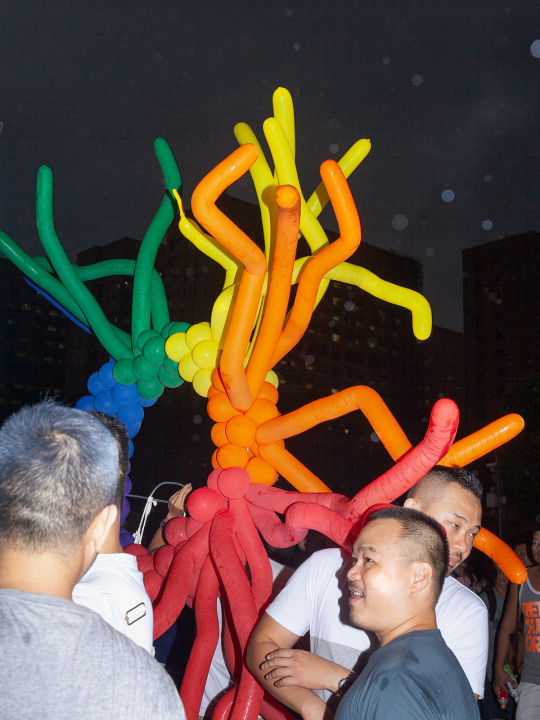
q: In your ongoing series "Touching the colors of life/sex", when I first looked that portraits, the people featured seemed have a strong presence or individuality. Yet I found it interesting that in your description you wrote that the work is not about their personality but rather about a certain shared sameness and worth. What does this "shininess and worth" mean to you?
a: When I shoot portraits, I'm more interested in something that everyone shares, rather than something that only that person has. I call it shininess and worth. Everyone is different, but the same thing that is shared by everyone who is different. It's something that bursts out when I shoot. I'm sorry to say it's just a feeling, but when I touch it, I feel like maybe the person in there could have been me.

q: You exhibited "Touching the colors of life/sex" and also made a publication. Having used different methods of presenting your work, is using different mediums to show your work (spatial installation, publication, digital etc.) important to you?
a: I create my work to give shapes to my experiences and thoughts. I like to leave my work like a diary, so I like it to be in the form of a book, like a zine. I also like the idea of being able to reach people I don't know yet. As for the exhibition, it clears up my thoughts and gives me a more experiential feel. As for presentations on the website, there are new services like Cargo-web that allow me to present my work more freely, and I'd like to try out various ways to do so. In answering these questions, I realized that I am not so particular about the form of presentation, but would like to experiment with various ways.

q: Upcoming projects or ideas?
a: From April to July of 2020, I spent time with my family for the first time in six years. I want to summarize my relationship with my family there. I've also started living in Taiwan, so I hope one day to be able to give form to my thoughts and experiences here. Now I am interested in the things that we all share, even though they are unformed. I don't know how I can present those things, for example, self-awareness, in pictures but I would be very happy if I could.
q: Any new music to recommend?
a: I like Taiko Super Kicks and Homecomings, Japanese bands I listen to a lot these days!

his website and Instagram.
Get more updates on our Facebook page and Instagram.
#Masashi Urashiba#nope fun#photographer interview#artist interview#osaka#japan#taiwan#queer#Contemporary Photography
18 notes
·
View notes
Photo
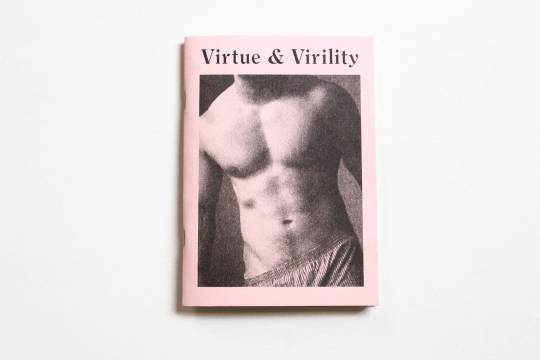
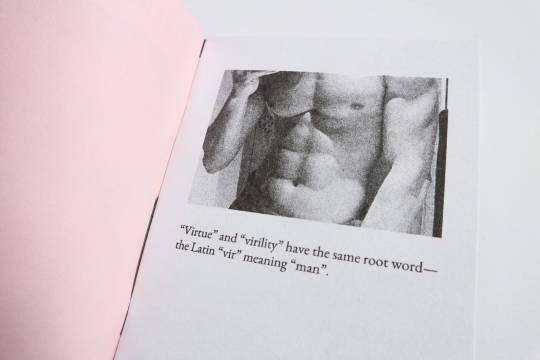
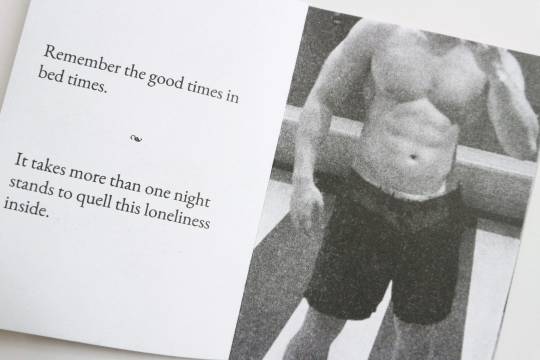
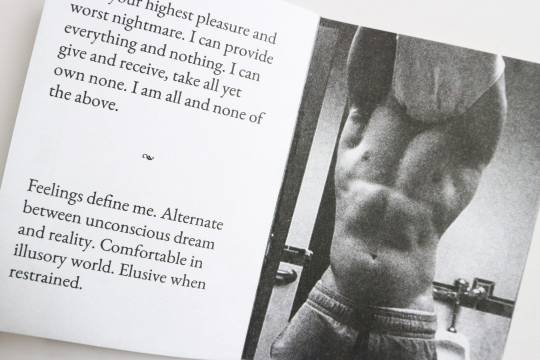
Virtue & Virility is a zine published by Nope Fun presenting a series images an quotes taken from various gay networking mobile apps. The quotes are taken from the “about me” sections where individuals can introduce themselves.
The 32 page publication highlights the intriguing ways gay men choose to present themselves in virtual space through photography and text, and looks at questions of masculinity, sexuality and self-portrayal.
The self-portraits underscore perceived societal ideals of masculinity and sexual desirability; yet their anonymity also depicts an underlying concern of privacy and stigma for promiscuously found even within the domain of queer spaces.
The photos depict rather sensual images of headless torsos, and printing these images lends a tactile quality to the bodies. Printing in full bleed means viewers inevitably touch the bodies. Furthermore, because of Risograph printing, some of the ink smudges when flipping through. The size of the zine roughly the size of a smartphone, alluding to how the images would appear on the phone.
Get a copy here. Check out more publication reviews at our bookshelf.
Get more updates on our Facebook page and Instagram.
#Virtue & Virility#nope fun#zine review#risograph#Publication Design#self-publishing#queer zine#lgbtq zine#singapore#grindr#gay dating apps
34 notes
·
View notes
Text
Interview #488: Atsushi Momoi

q: Give a short introduction about yourself:
a: My name is Atsushi Momoi, Japanese photographer, who creates and lives in Tokyo, Japan. My main interest is to visualize inner experience emerging from the connection with outer reality. In other words, I’m trying to show the multi-layered images during the formulation process of our perception with the influence of an external environment which involves us, others, society and the world itself.
q: In your series "A LIGHT LEADS TO ANOTHER", you look at the fragmentary yet layered nature of memory. When you create the images, perhaps it creates yet another layer of perceiving or understanding memories. Can you tell us more about your process?
a: “A LIGHT LEADS TO ANOTHER” is a project focused on my personal memories. It tries to visualize the process of evocation by making use of photographs taken by myself so far as image resources of memories. At the same time, through this project, I wanted to think objectively about memory as universal experience: how our consciousness is reconstructed by the past images
Originally, I had a strong interest in memory. So, I had been thinking about how I can make vague and irrelevant images clear through taking photographs. One day, I was organising photography data in my computer. And at that time, I just noticed there were some photographs without intention, I mean I didn’t know the reason why I had taken them. They had a kind of reality that made me think memory is also like this. In fact, forgotten memories account for the majority in our daily lives. I understood all these photographs were not only the fragmented records of my life but also a gathering of memories. Therefore, I embarked on making project based on my own memories and using photographs I had taken as the source materials.
The title is derived from English phrase “one thing leads to another”. I thought it well-expressed my inner experience about remembrance, in which fragmentary memory is recalled as an image in light and connects with one after another.

q: It seems like you used film to shoot this series which introduced certain distortions like light leaks. At the same time, the images shot were presented on a computer screen, which also distorts the images in pixels which are visible in some of the pictures. What was the intention of using film? Or rather the layering of digital screens and film?
a: Yes. I shot on film for this project. Actually, I had a quite clear vision about my evocation process. It seemed that dim light came up gradually from the darkness and then became brighter with changing, appearing or disappearing to my consciousness. So, all I had to do was just recreate this visual experience as much as possible.
Specifically, to achieve this purpose, I re-photographed pictures, which were taken by myself, displayed on my Mac monitor. At first, I inputted a large number of images in past shooting onto slideshow and then set in it to display these randomly with modifying the setup. Once I finished setting up, incoherent images came and went at random on the monitor. It was quite interesting that I thought this function resembled how to recall my personal memories.
With regard to shooting, in order to trace the consciousness derived from memories, I shot the monitor showing overlapped images with multiple exposures. And also I deliberately added light leak on exposed film in the developing process. In this series, while I record the memories recursively, I intend to show the boundaries between images in light and actual light got to be vague.
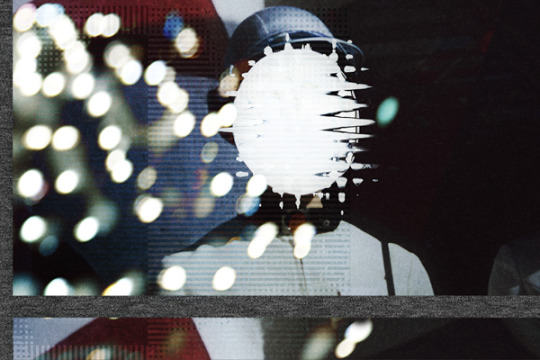
q: Your series "in and out" deals with the relationship between image and reality. In Jean Baudrillard’s idea of “Simulacra and Simulation”, it outlines the relationship between media (including photography) and our experience of it. How do you think the idea of a constructed reality made of symbols and signs relates to your series?
a: As you say, the concept of “Simulacra and Simulation” has become increasingly important as a means of the way of seeing the world. Due to the recent progress of digital media environment, a large amount of images are generated by means of casting the real world that exists as it is. Furthermore, their images, which are the representation of the world and in most cases they are given some meaning as a part of the system, become not only another reality by being recognized as “already existing things” but also casting mold for next images.
Those two things are infinitely expanded, reflecting each other, and as a result, they have an effect on our perception of what is inside and what is out. Thus, the vague boundary between reality and images evokes various layers of the world.
I’ve got have a strong interest in the environment. Particularly, the way in which we formulate our perception surrounded by it, regardless whether it is artificial or natural. A theme depends on the project, but the essential point is how to describe a new sense of value to update people’s perspectives by means of re-constructing various materials all over the world.

q: You have a background in sociology. Do you think it influences your photography?
a: Sociology and photography are quite similar in that both give some meaning to the world surrounding us. While sociology is the study that attempts to review and clarify structures generally recognized as obvious things, photography for me is an effort to update the perspective of viewers by means of visualizing invisible things or things that are visible but nobody cares. I’m sure that sociological approach is the basis of making and developing projects.
q: Any favourite dessert?
a: Dark chocolate.
q: Upcoming projects or ideas?
a: I'm currently working on a project about daily life. In the situation of the COVID-19 pandemic, we all should have noticed how irreplaceable it is. I would like to show there are as many stories as people through photography.
q: Any new music to recommend?
a: Nowadays I don't listen to music.
Maybe, I need some silence.

his website.
Get more updates on our Facebook page and Instagram.
#Atsushi Momoi#nope fun#japanese photographer#photographer interview#Artist Interview#covid_19#tokyo#japan#memory#simulacra and simulation#A LIGHT LEADS TO ANOTHER
15 notes
·
View notes
Photo





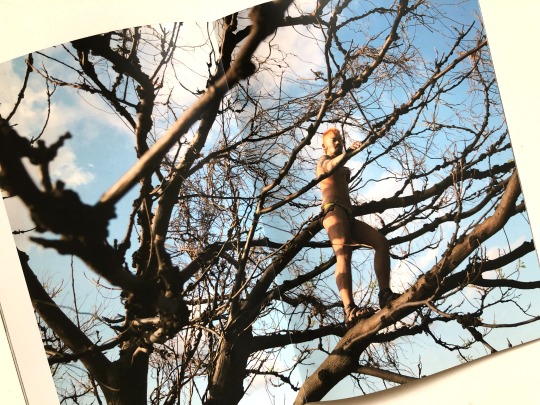
“Touching the Colors of Life and Sex/Fate” is a photo zine by Masashi Urashiba featuring portraits and snapshots bursting with effervescent energy. The self-published work consists of images taken in Osaka, Taipei, Kaohsiung, Bangkok and Dhaka. The photographs are laid out rather fluidly: some overlapping each other and others spilling across spreads, as if suggesting some kind of connectedness between otherwise disparate subjects or an overflowing of life.
The 62 page publication features striking portraits that celebrates all kinds of people, from bodies drenched in neon lights to stark flash on flesh. He writes, “this work is not trying to show each model’s personality, but to show the sameness of their life and body’s shininess and worth." For him, labels such as gender, sexuality, nationality are too narrow; each individual is so much more than that and his lens aims to capture that inner radiance.
See more of his work here. Check out more publication reviews at our bookshelf.
Get more updates on our Facebook page and Instagram.
#Masashi Urashiba#Touching the colors of life and sex/fate#zine review#nope fun#osaka#japan#japanese photography#japanese artist#publication design#self-publishing#portraiture#photozine#Art Book
38 notes
·
View notes